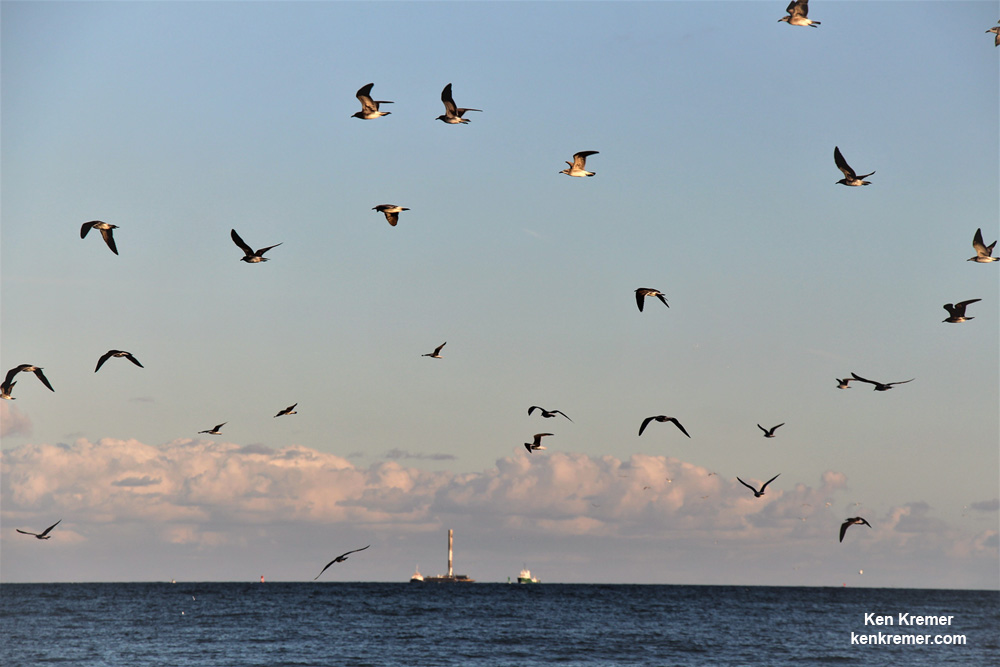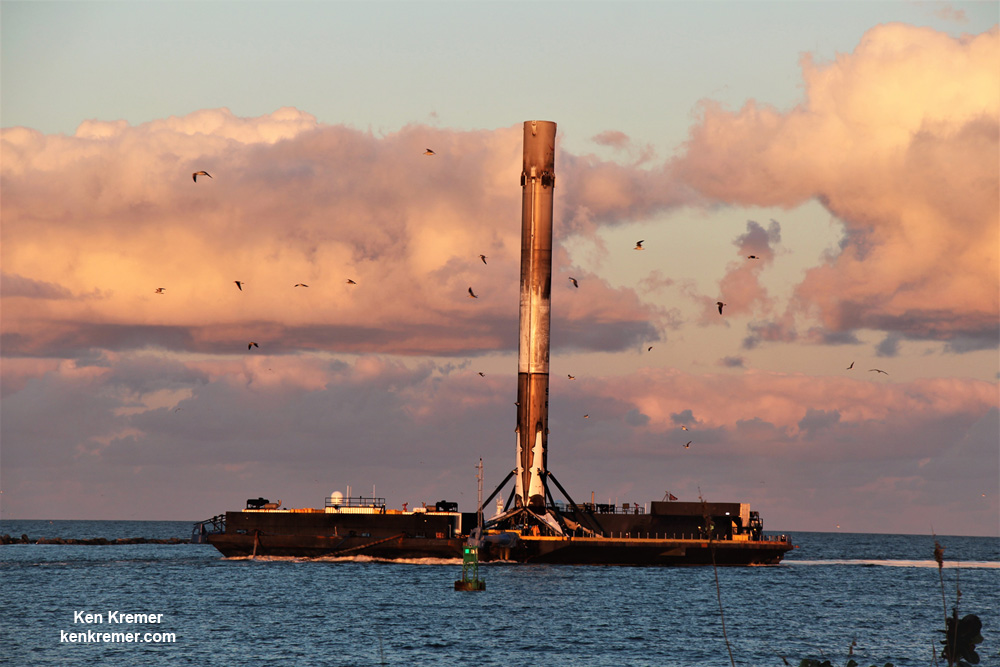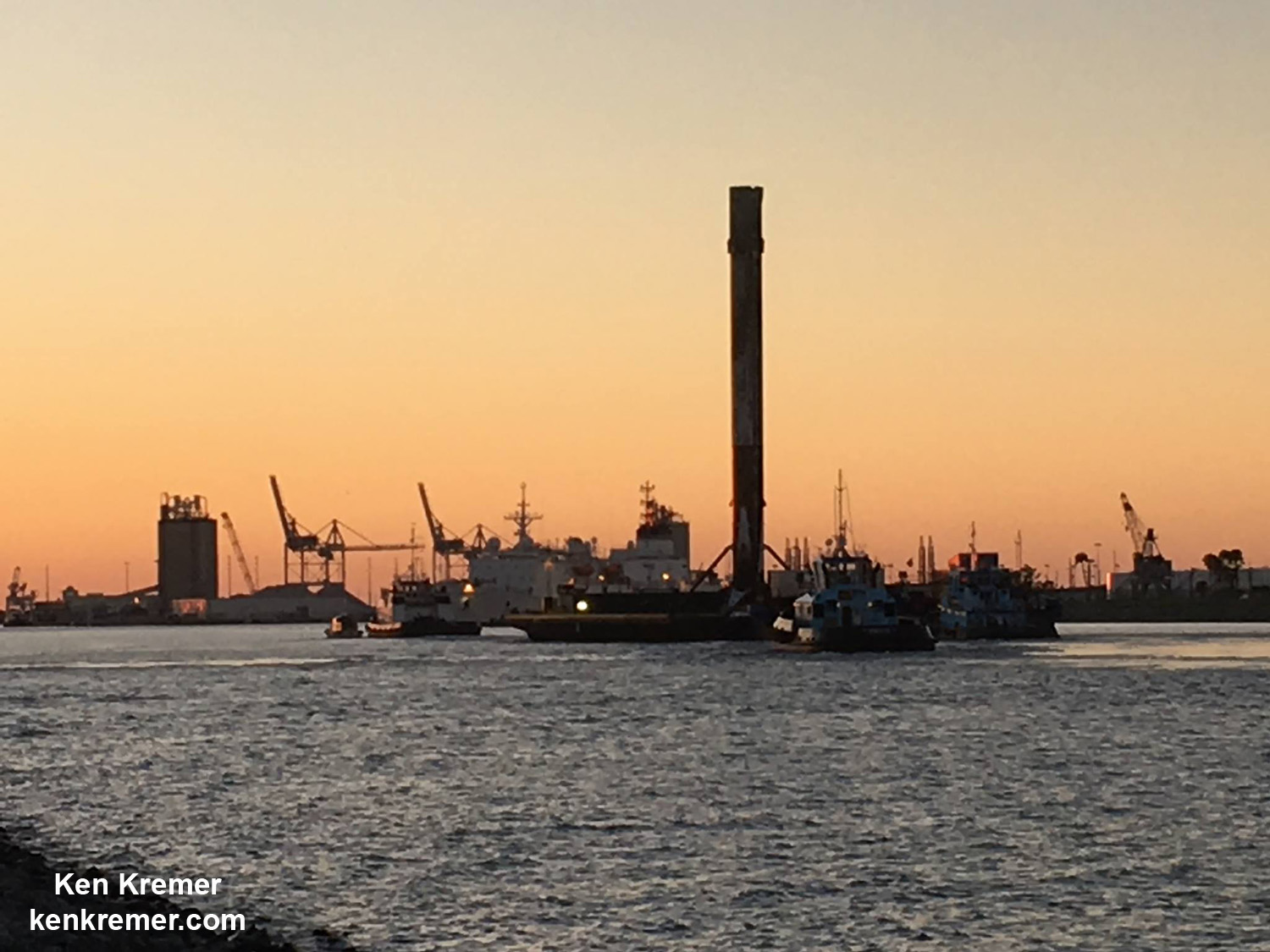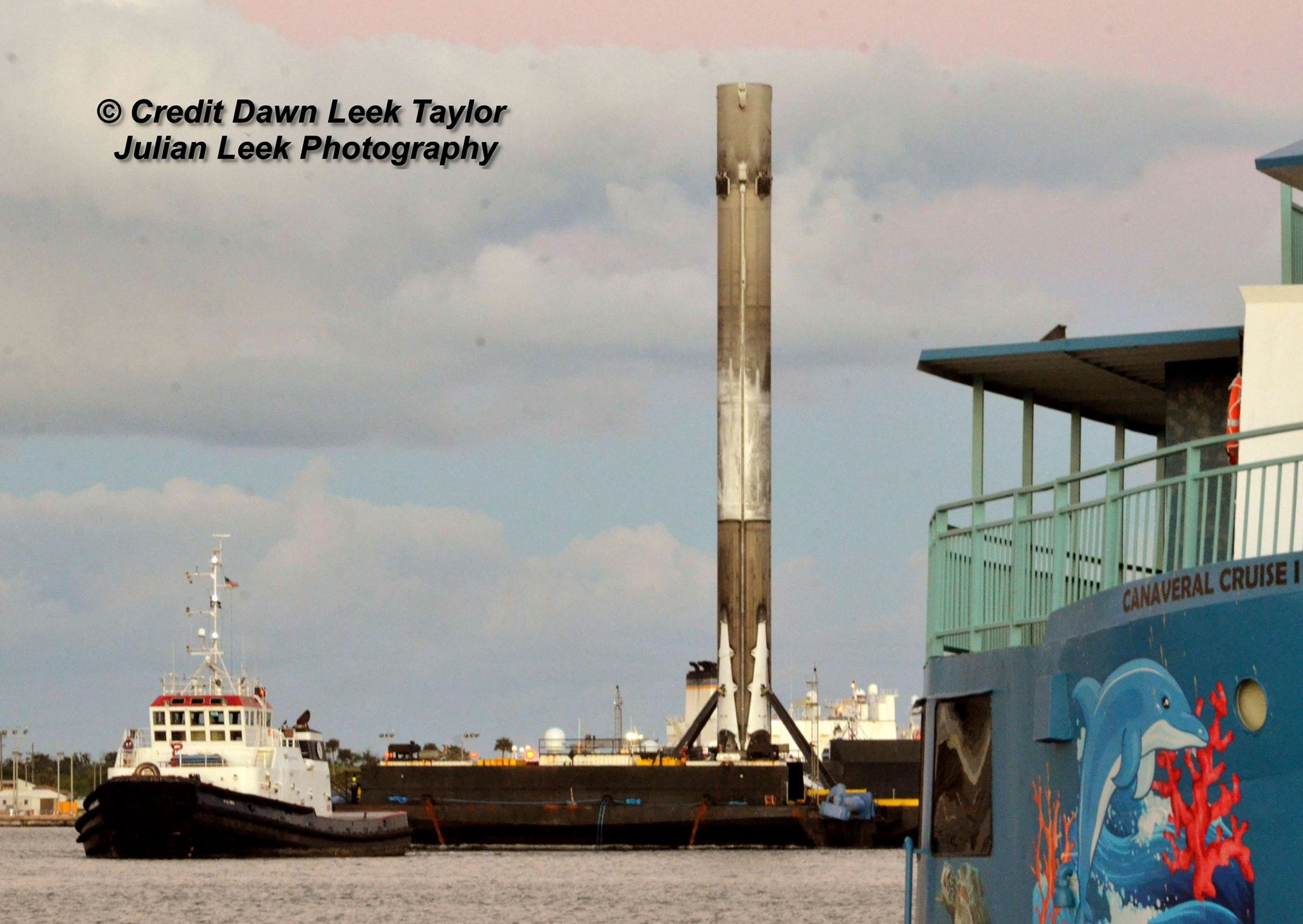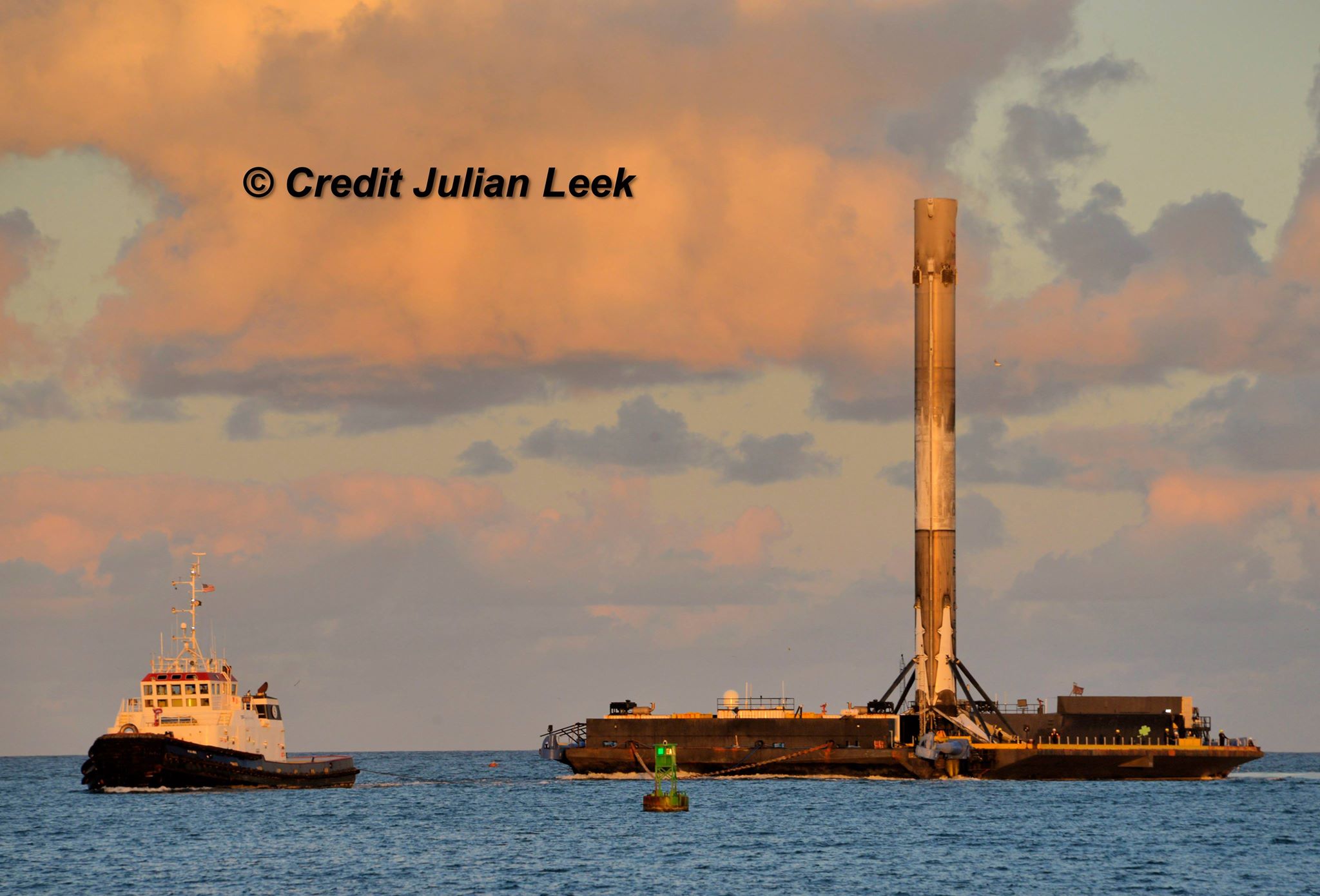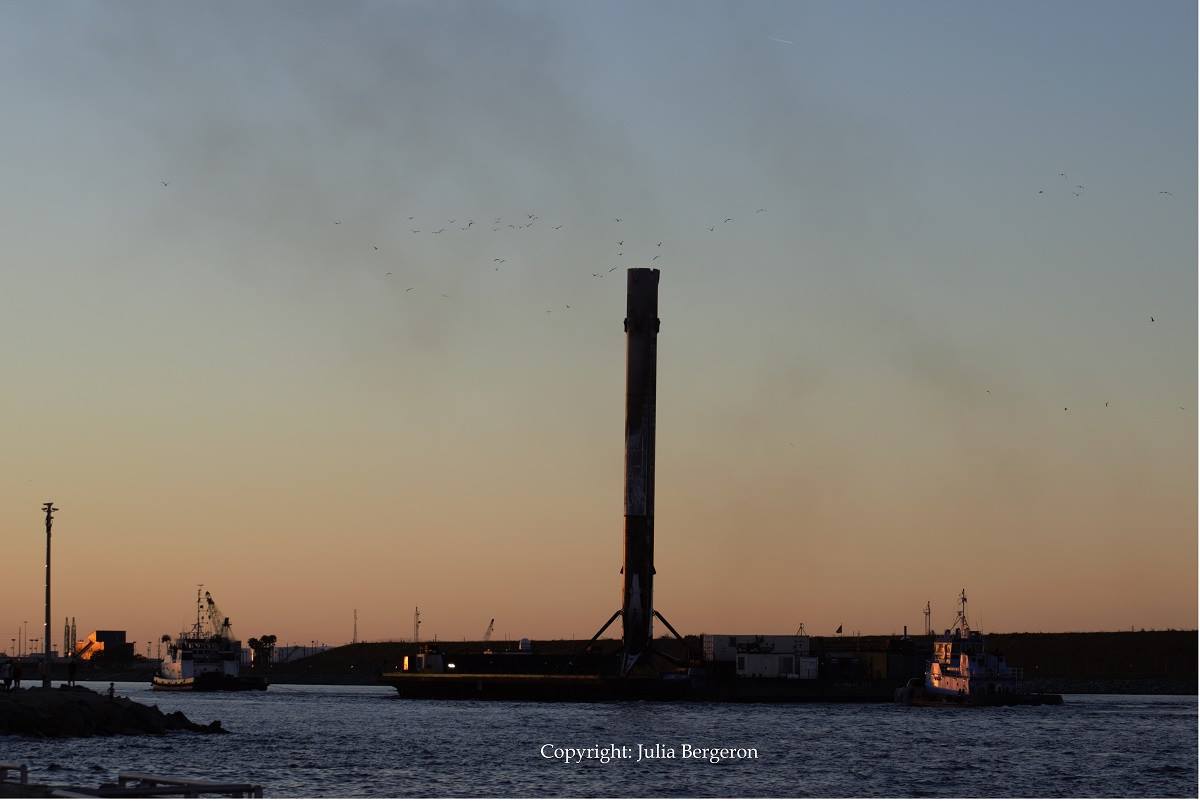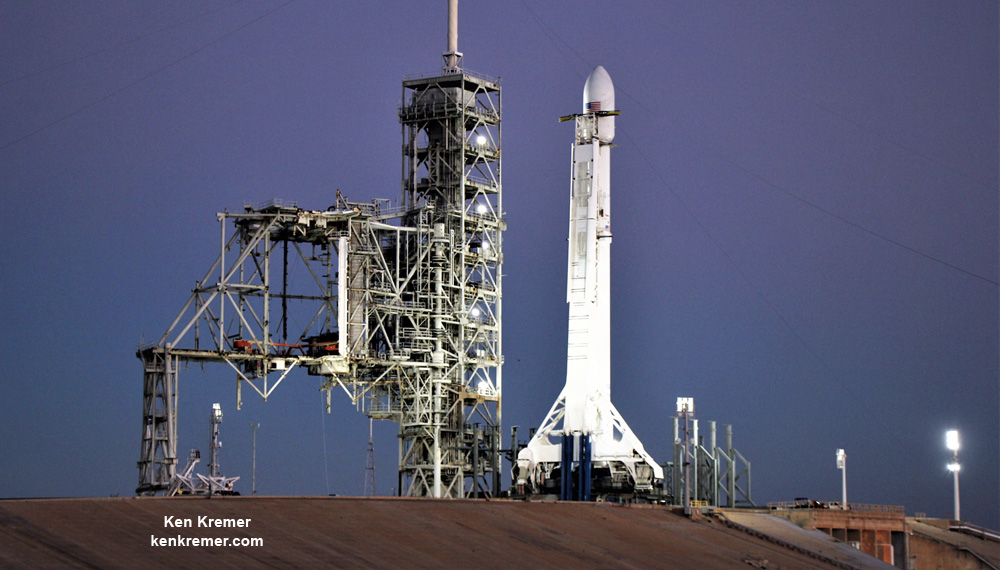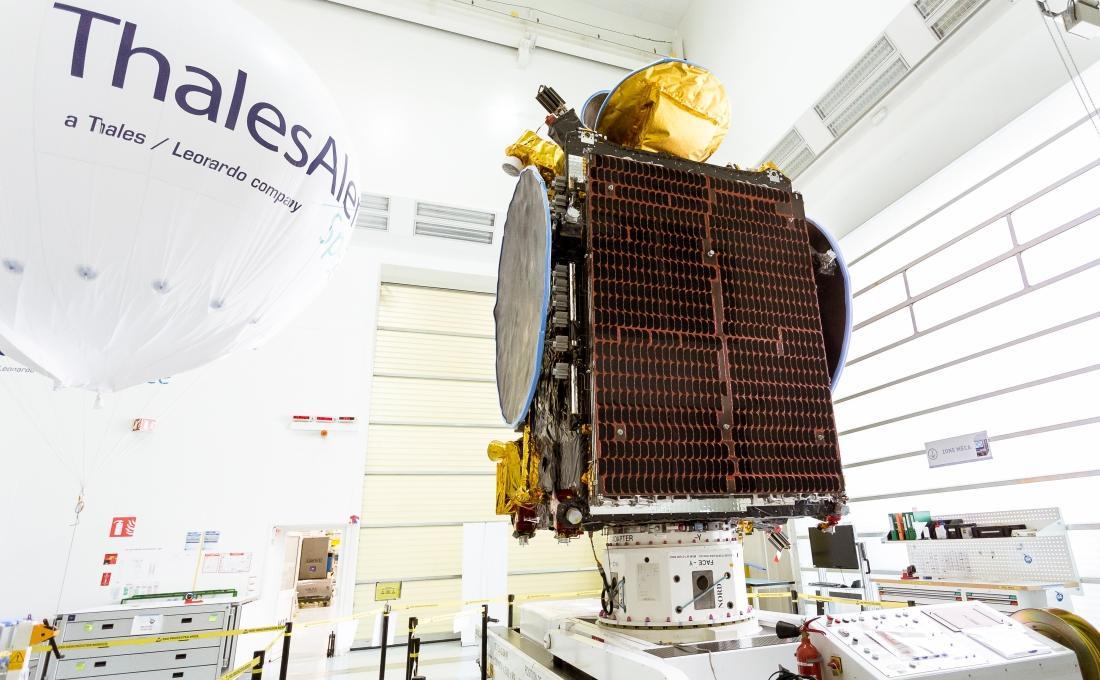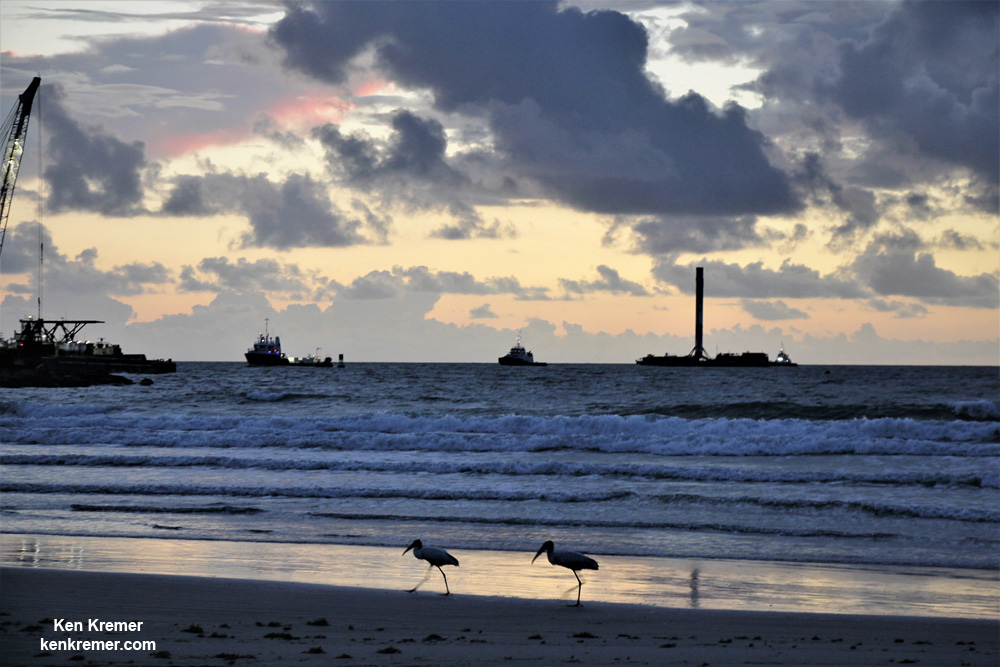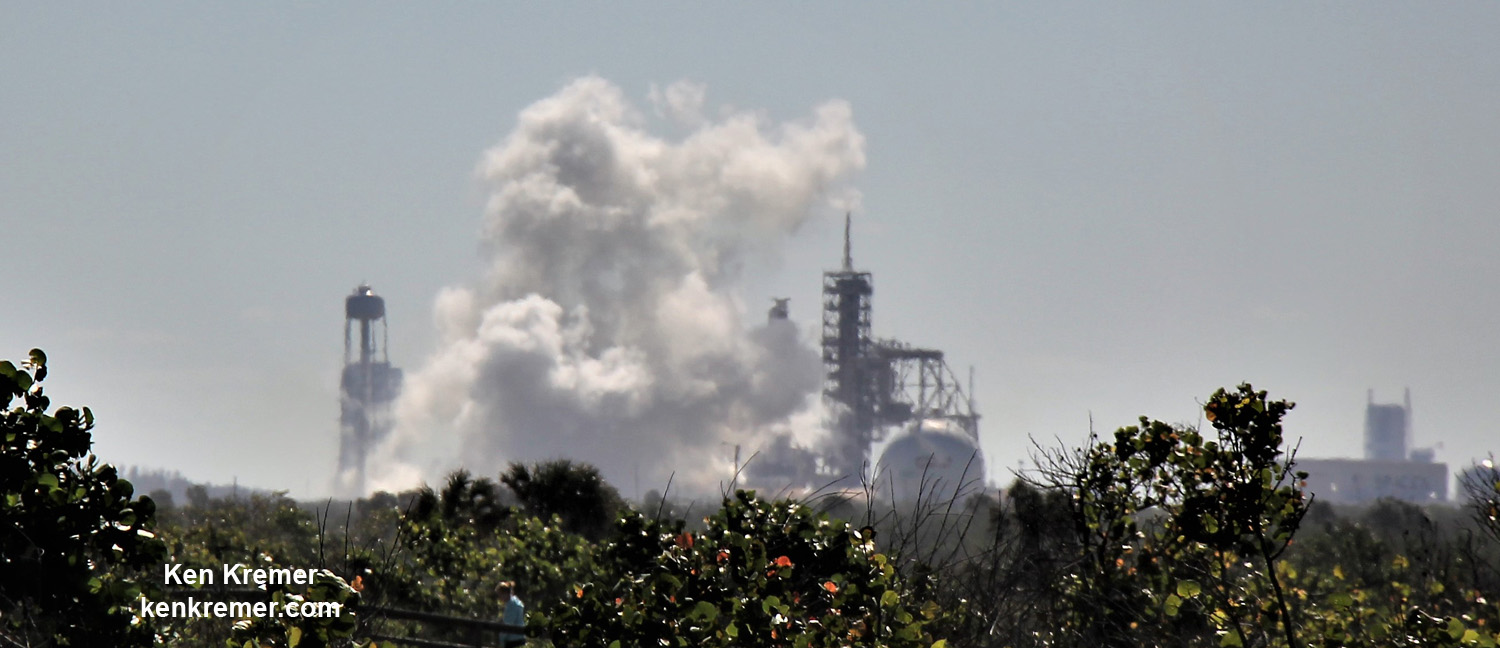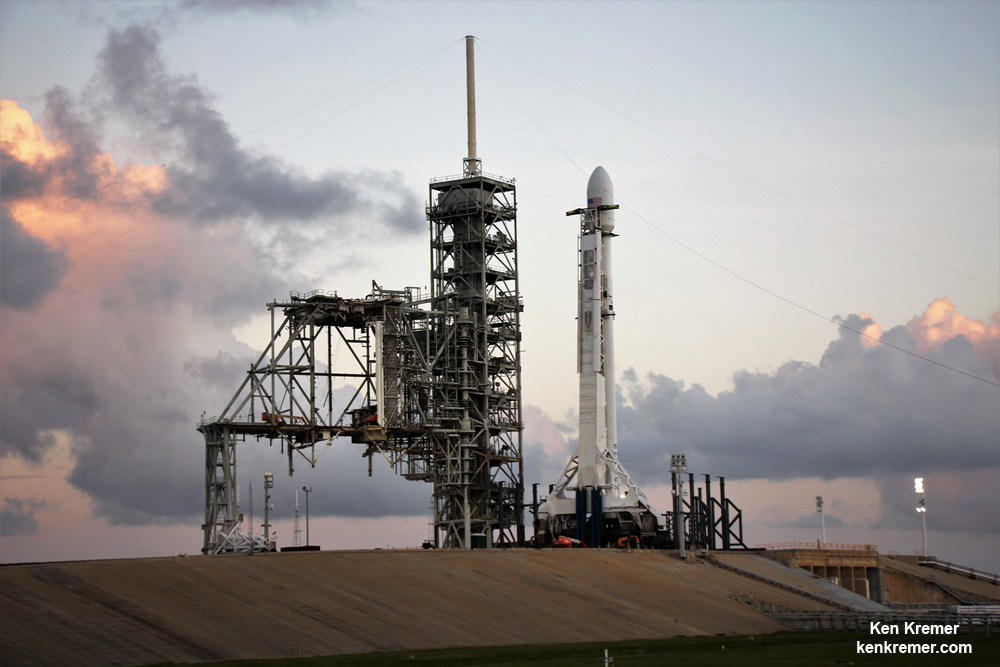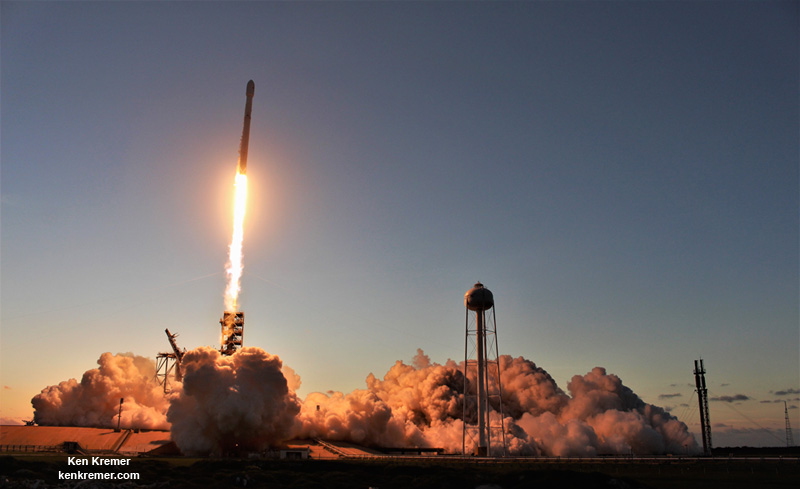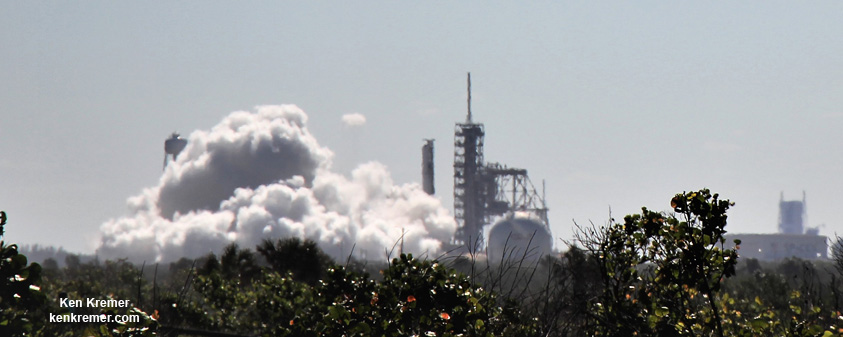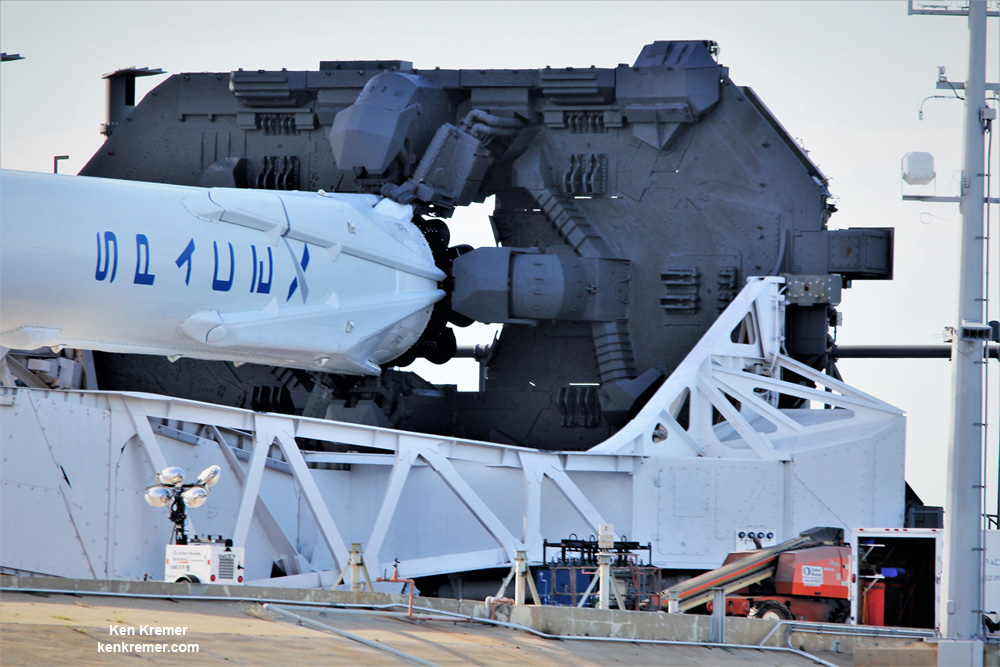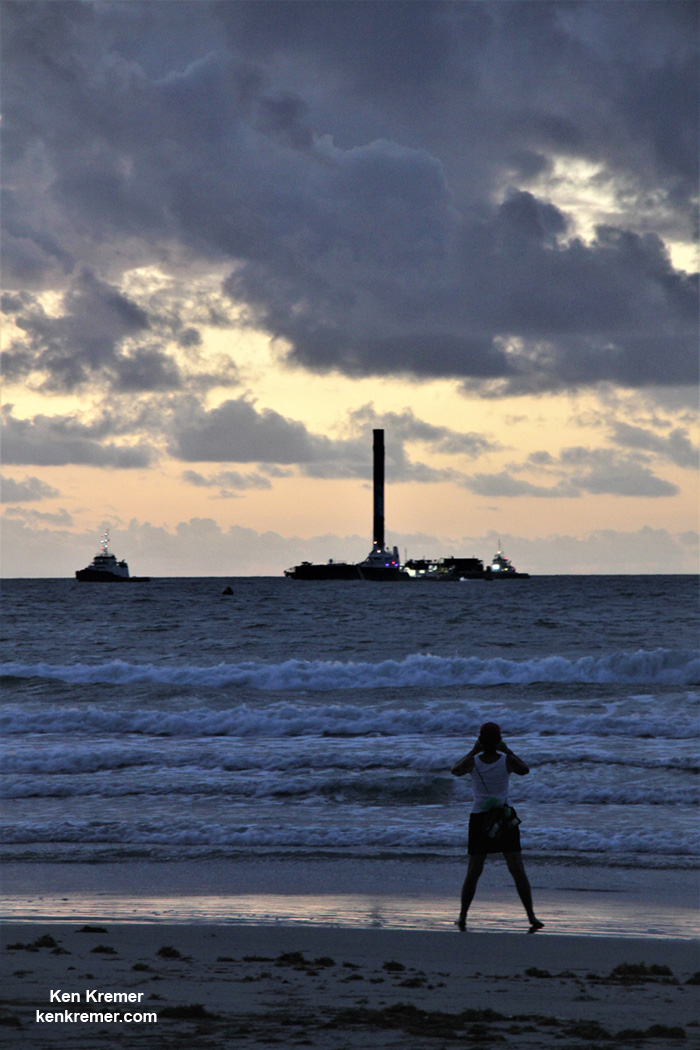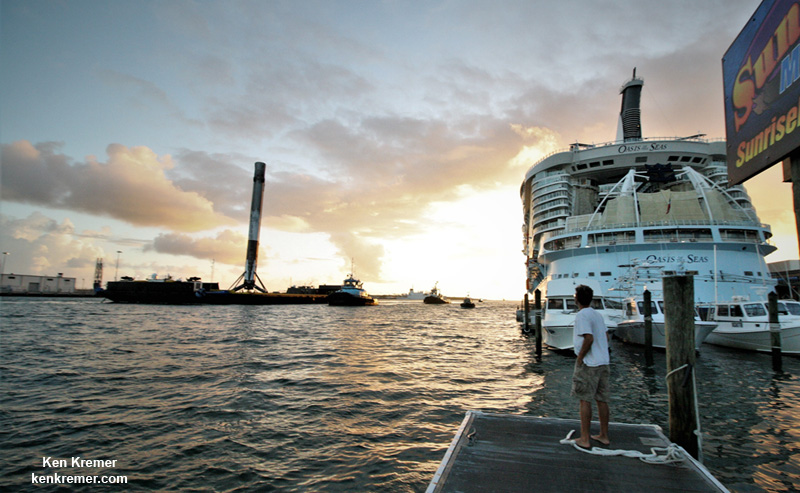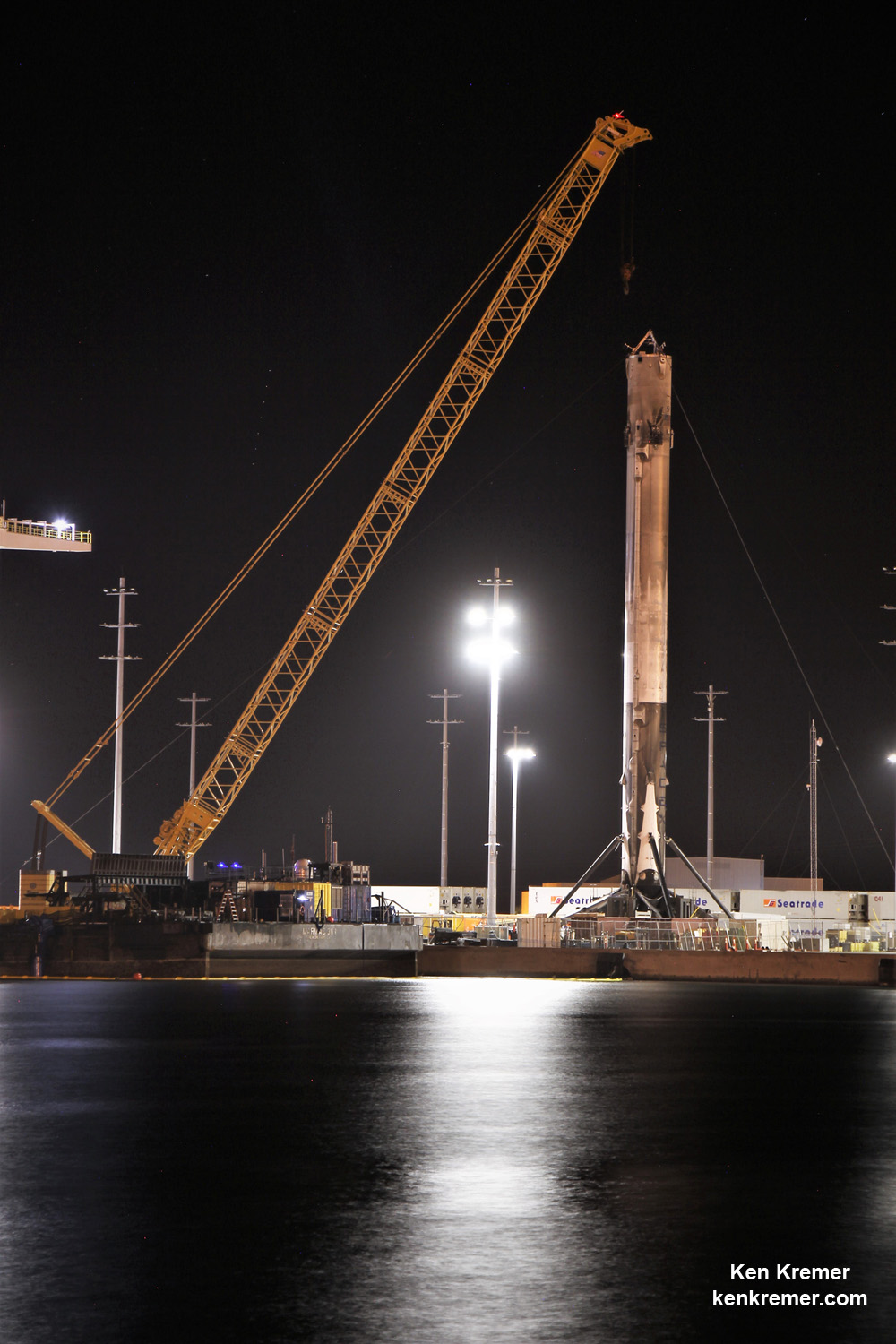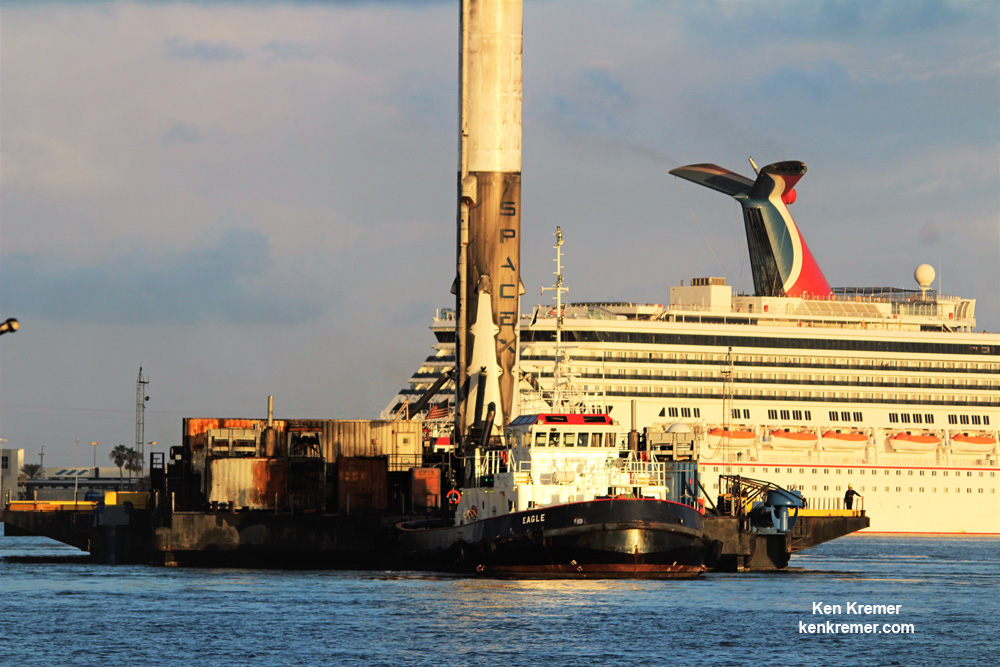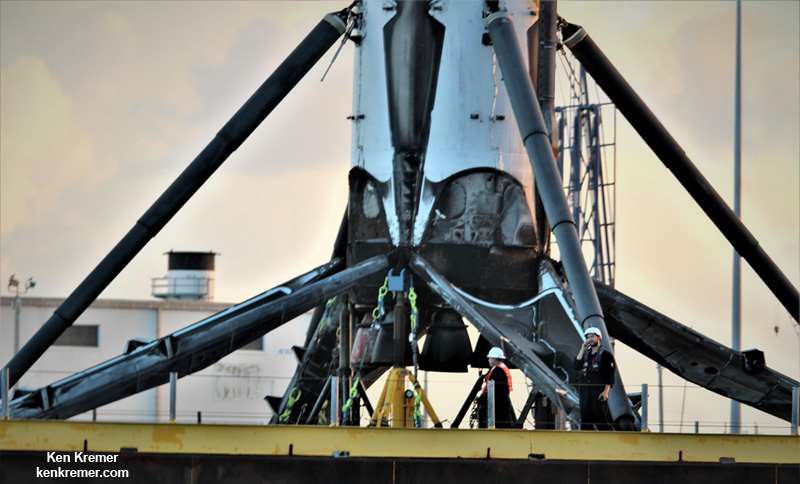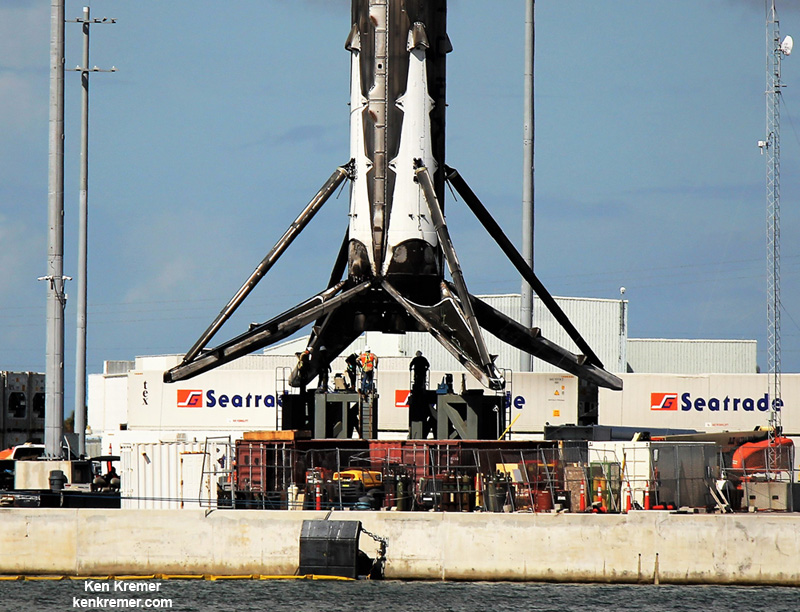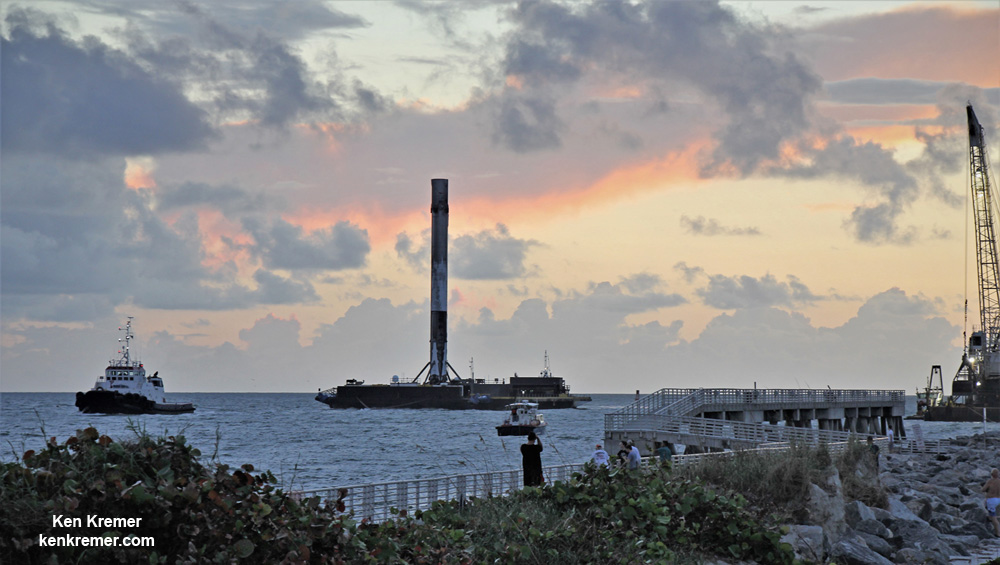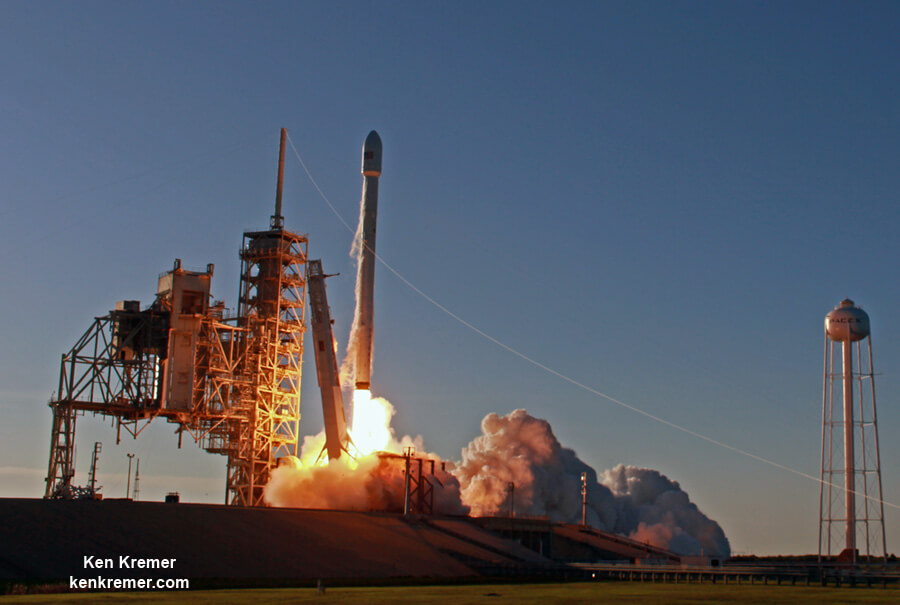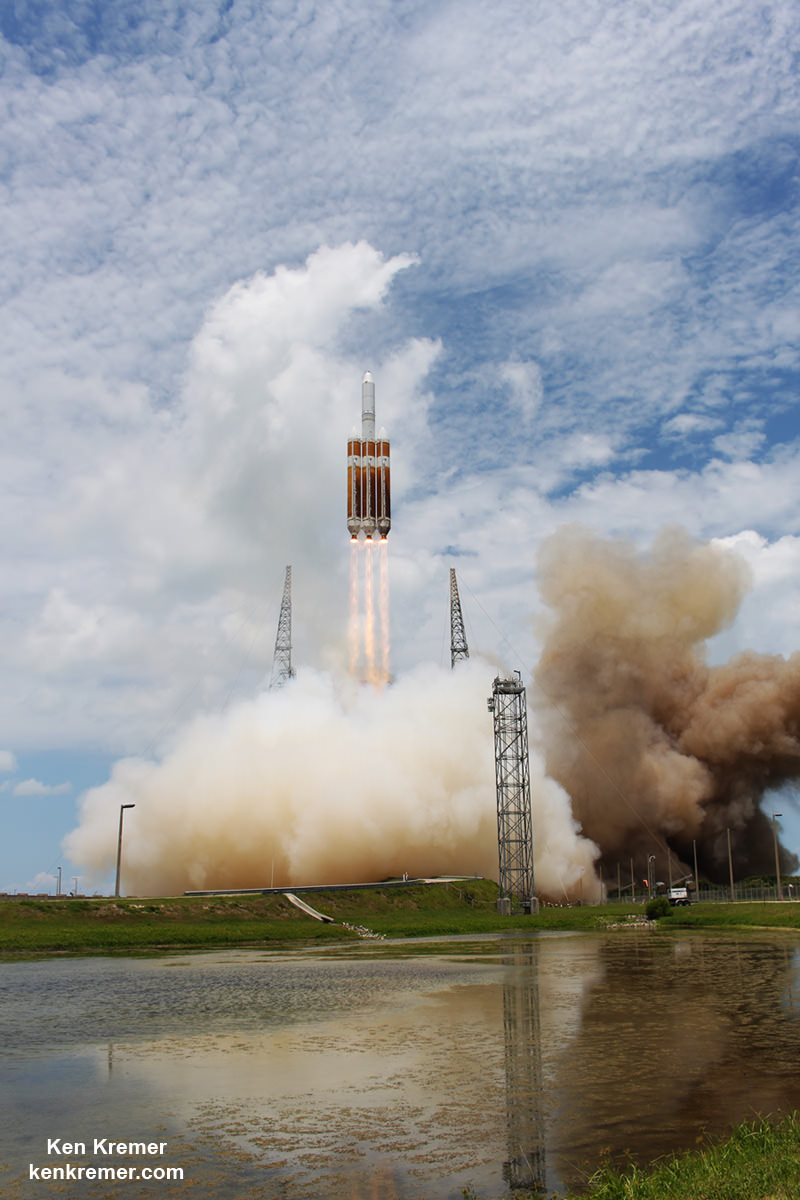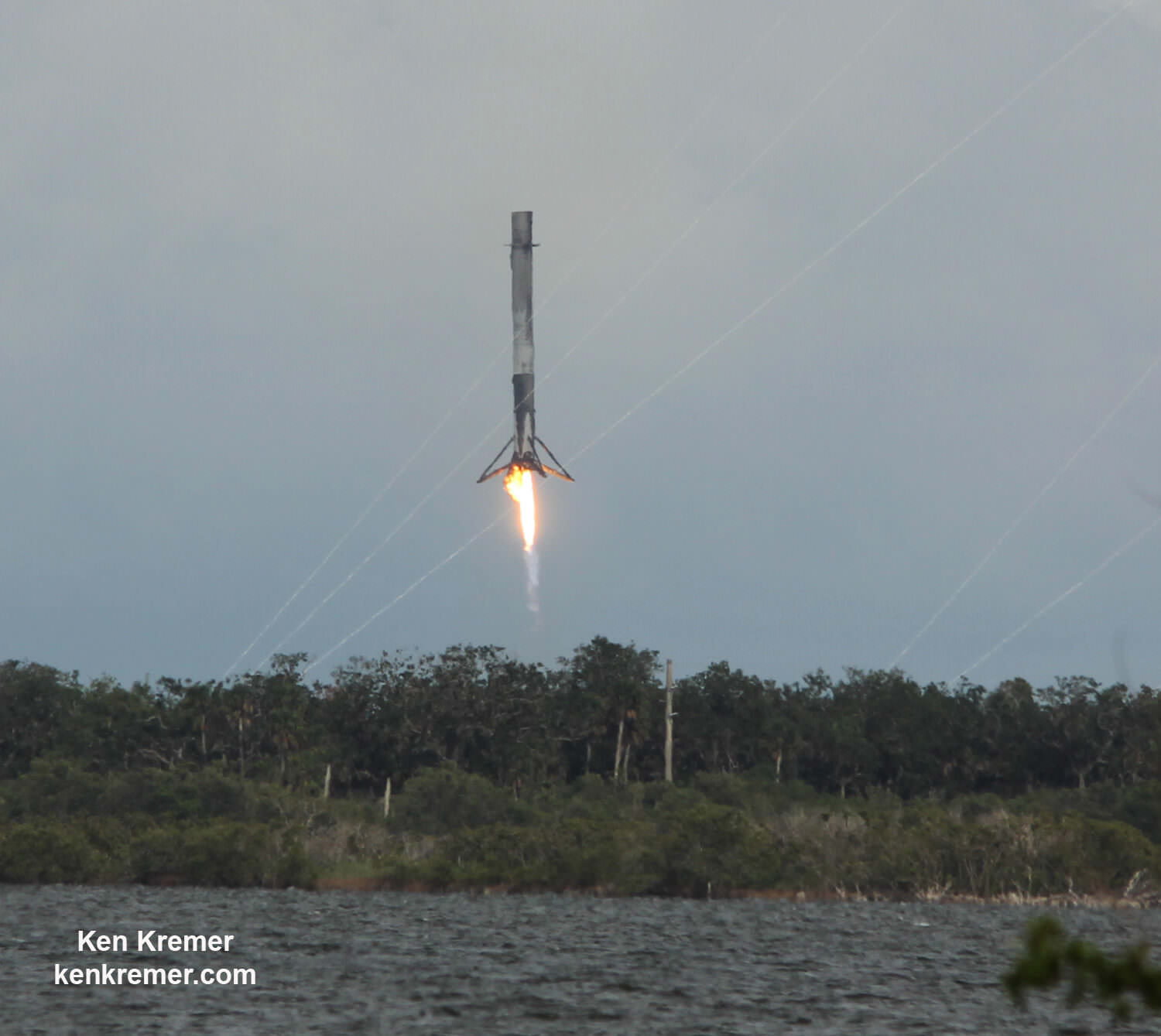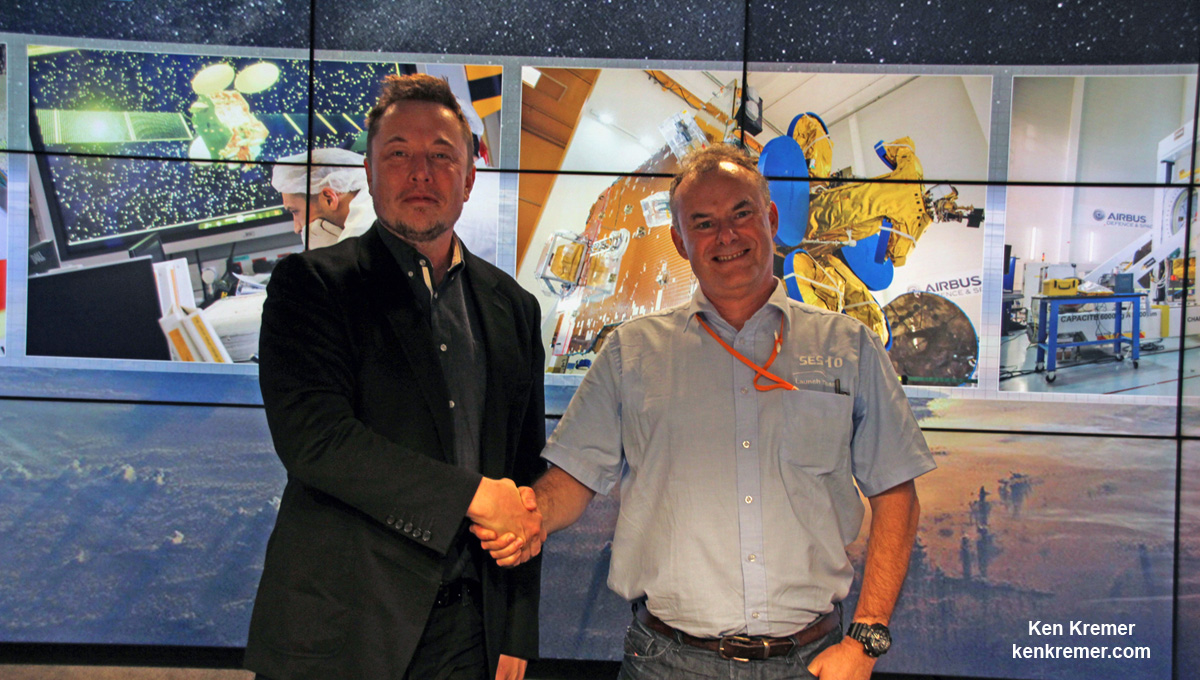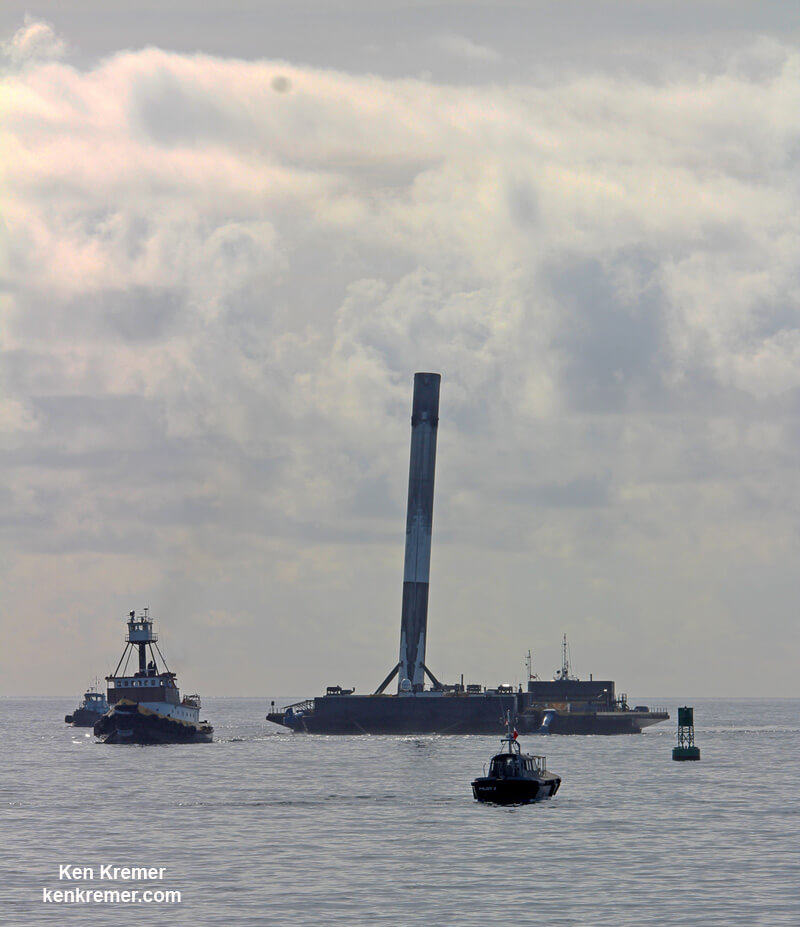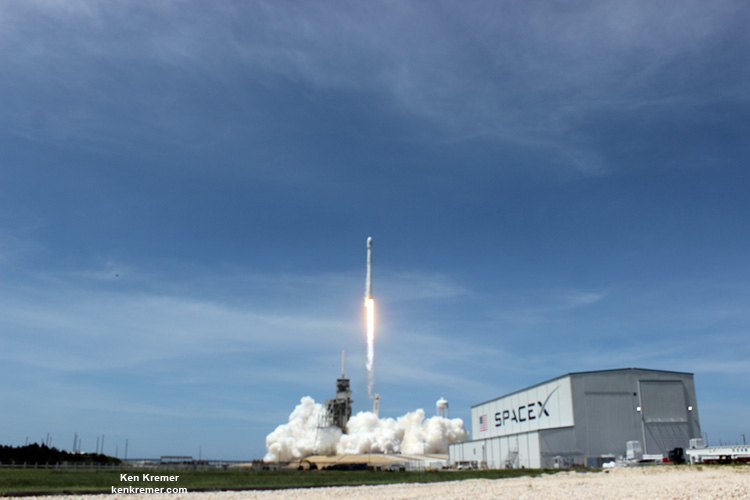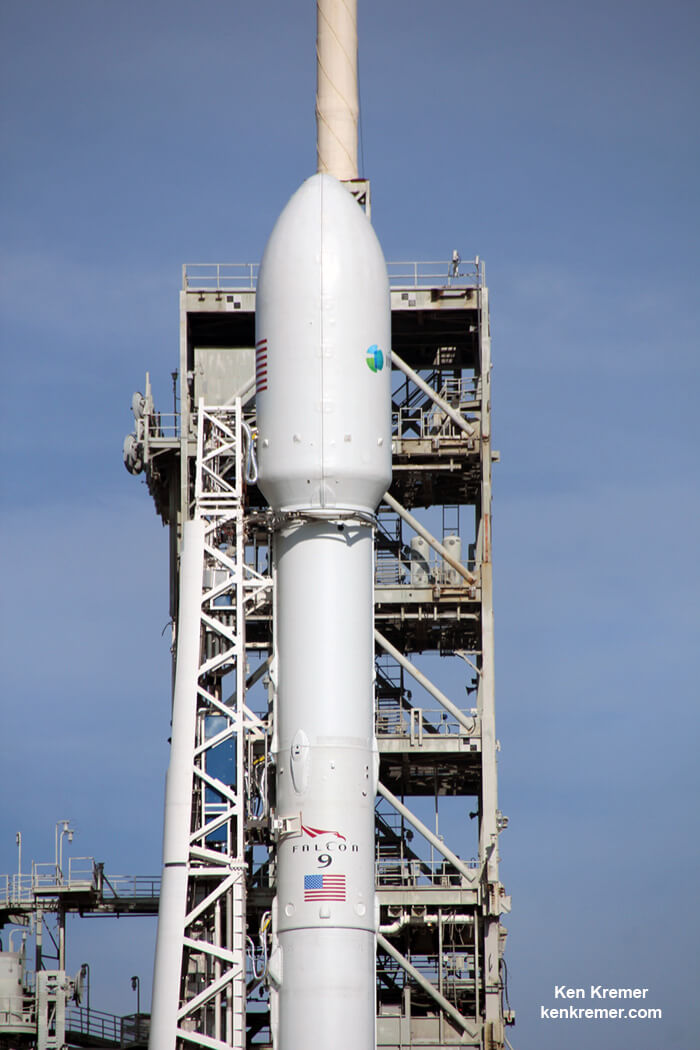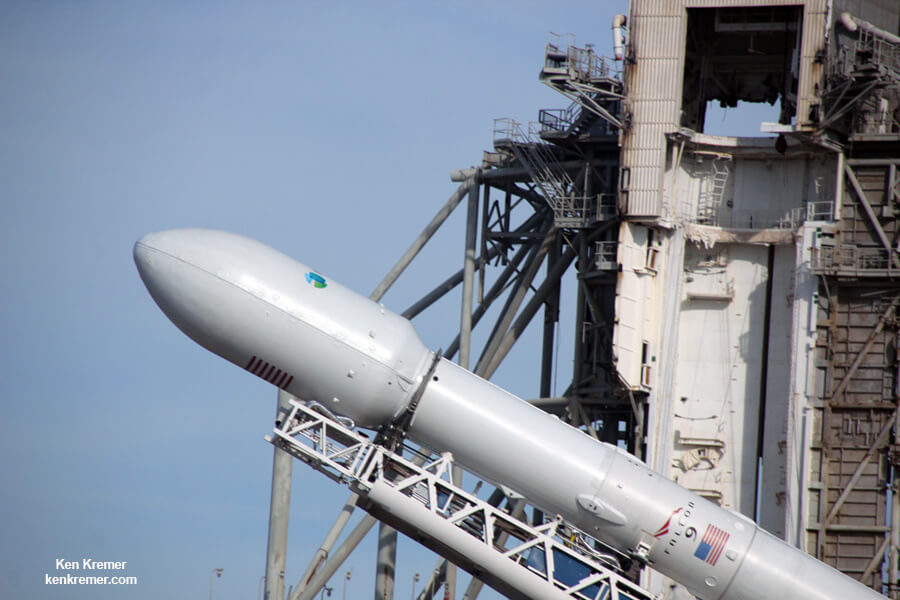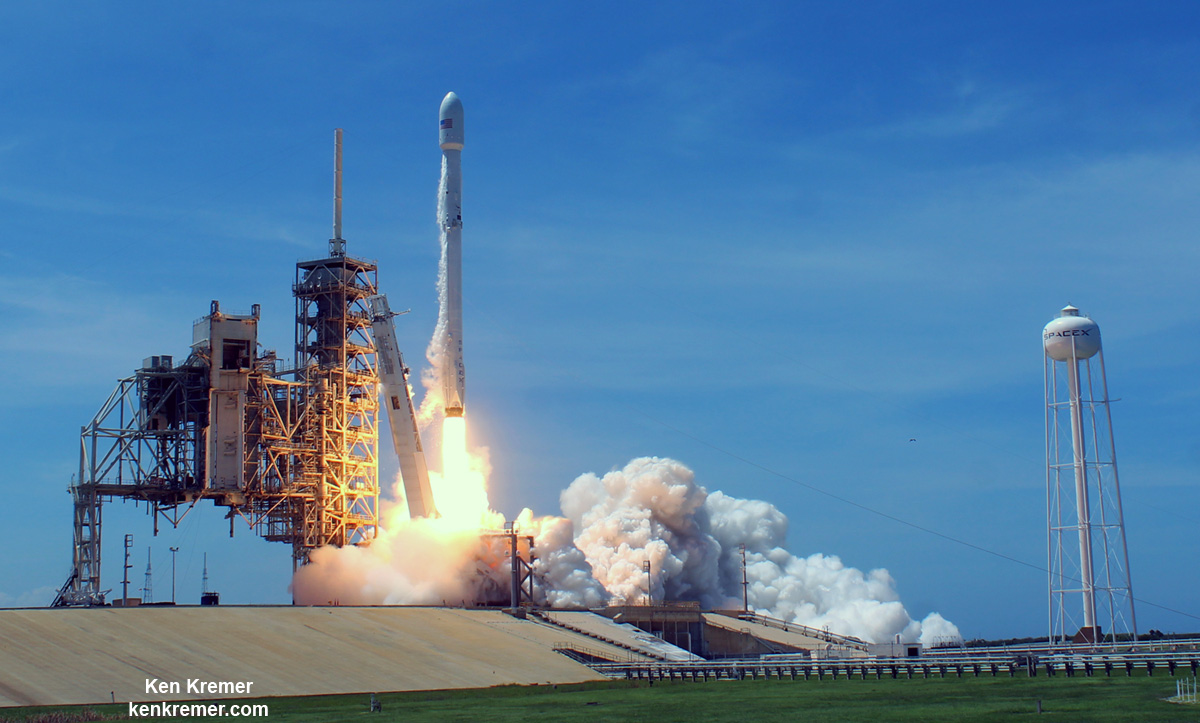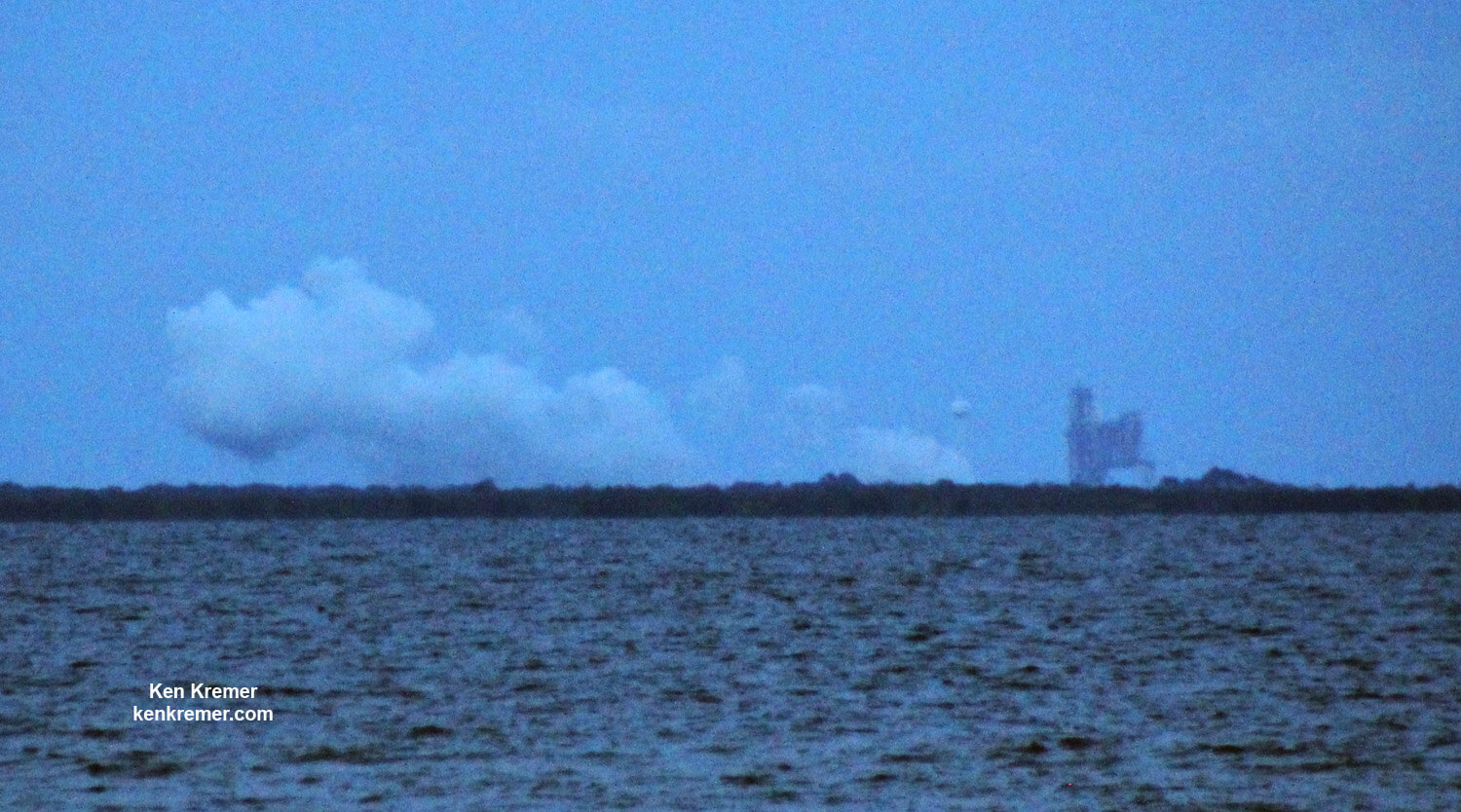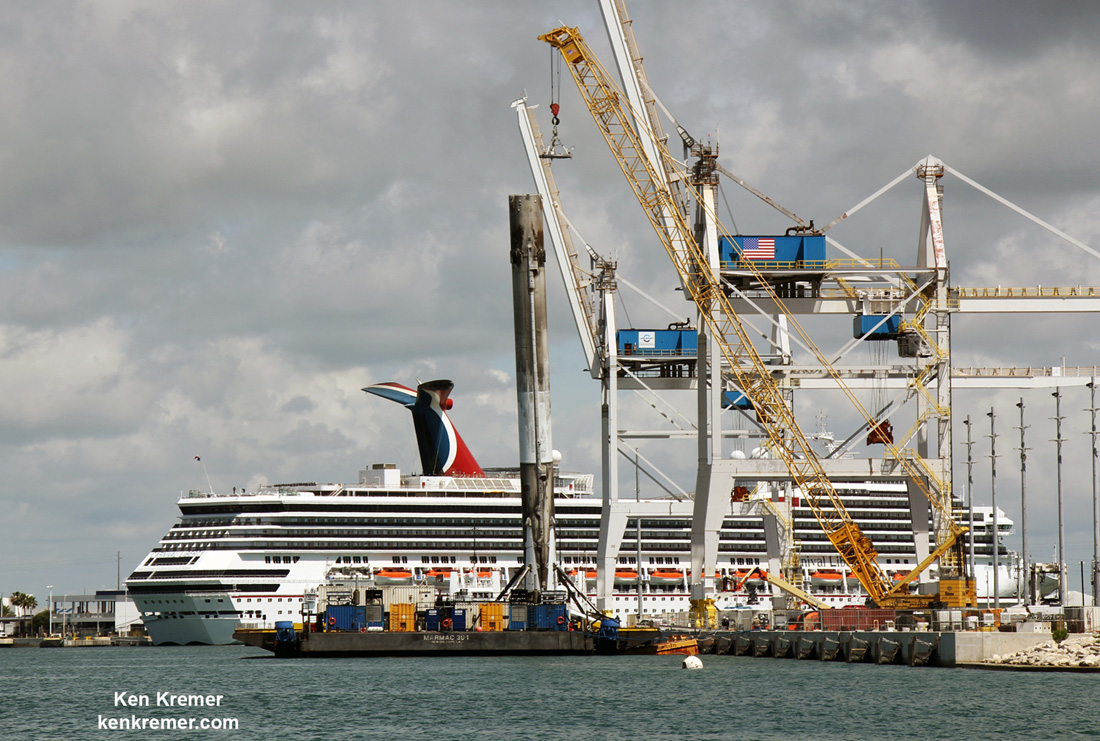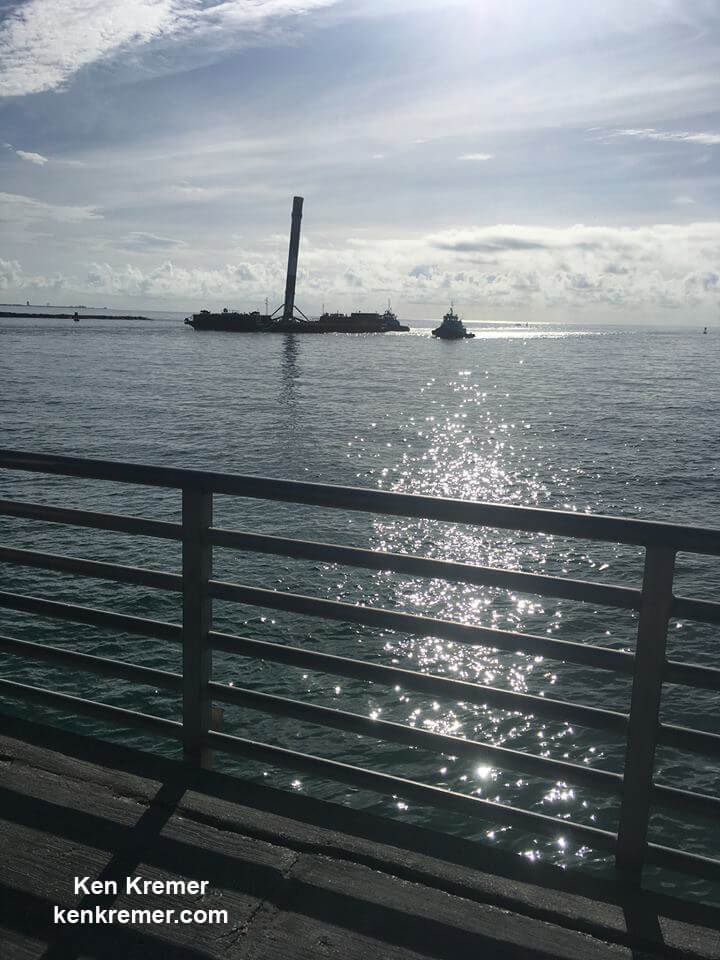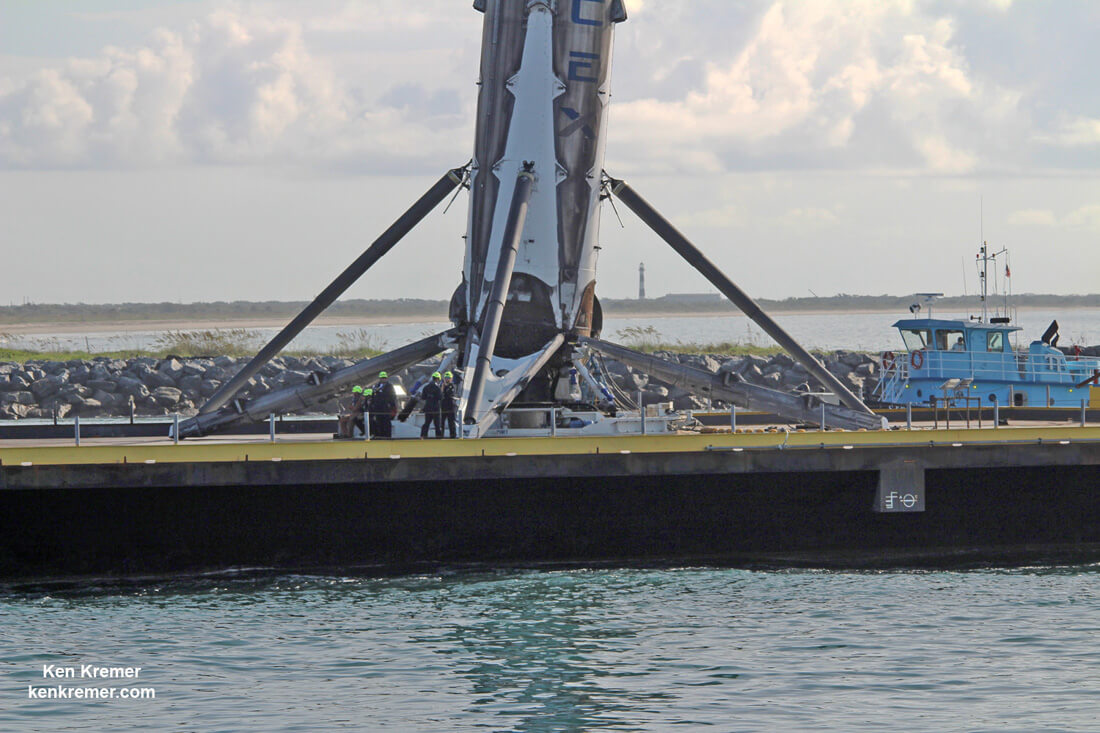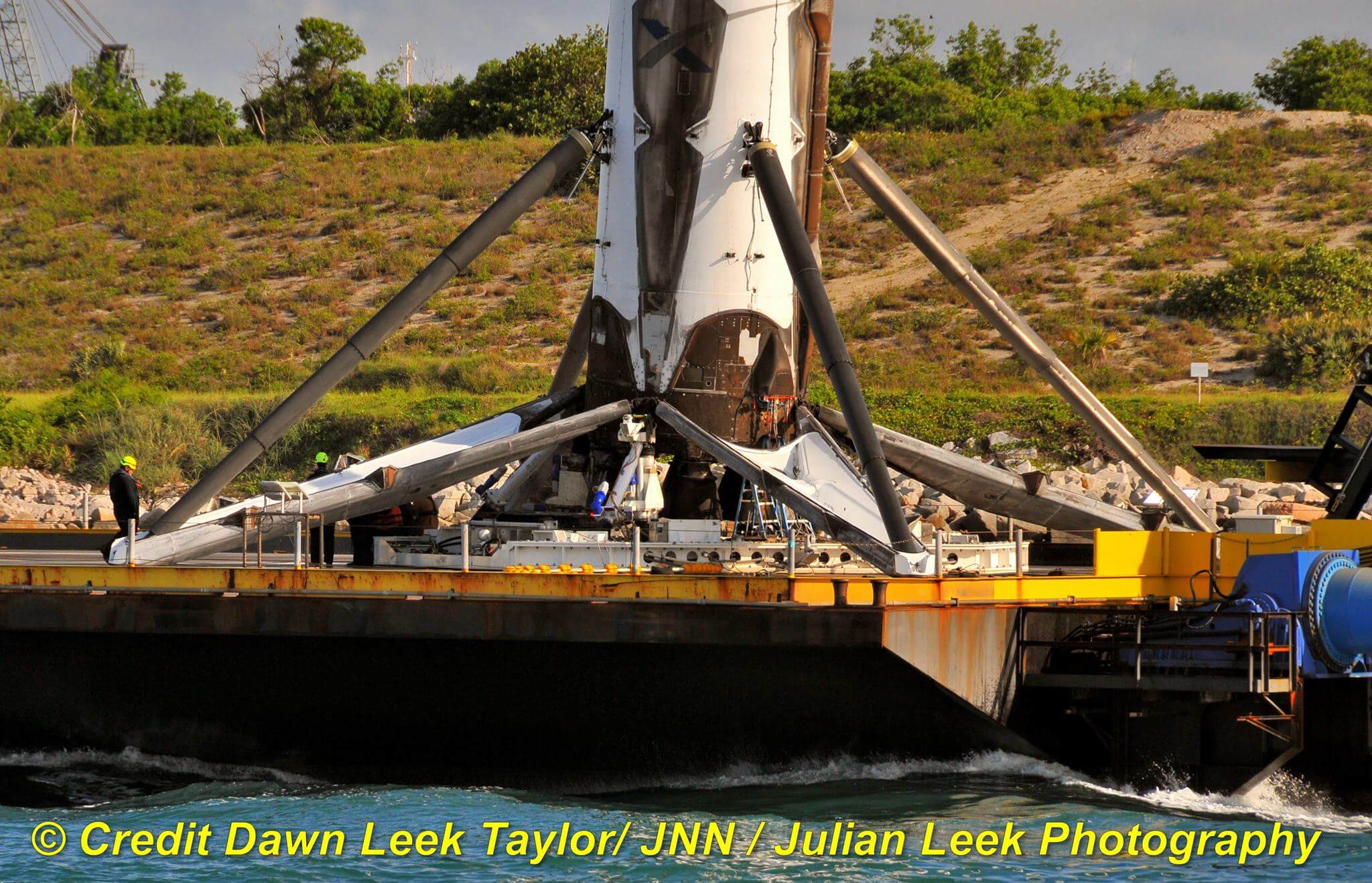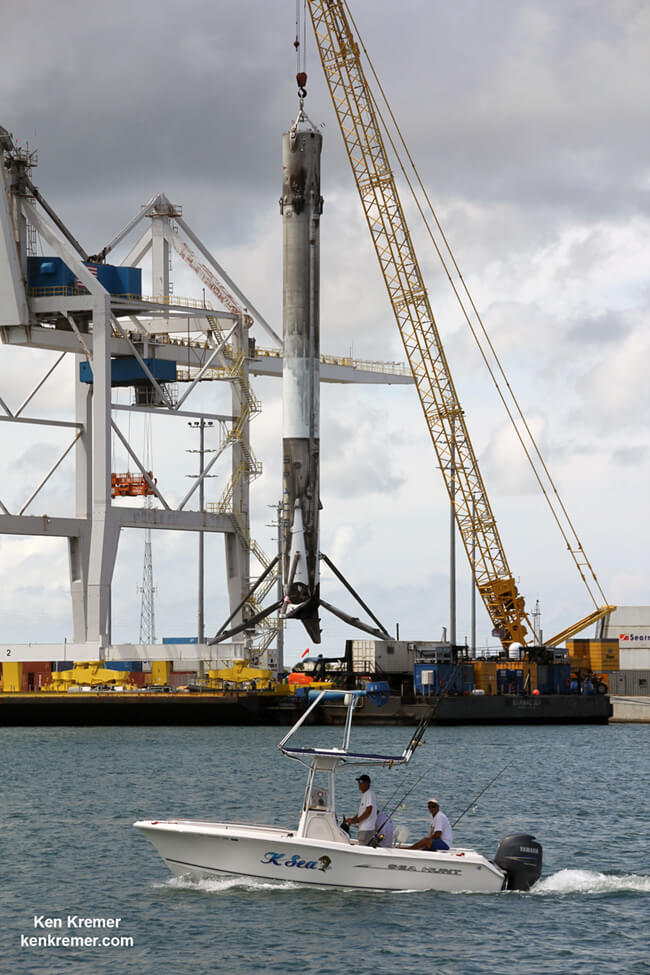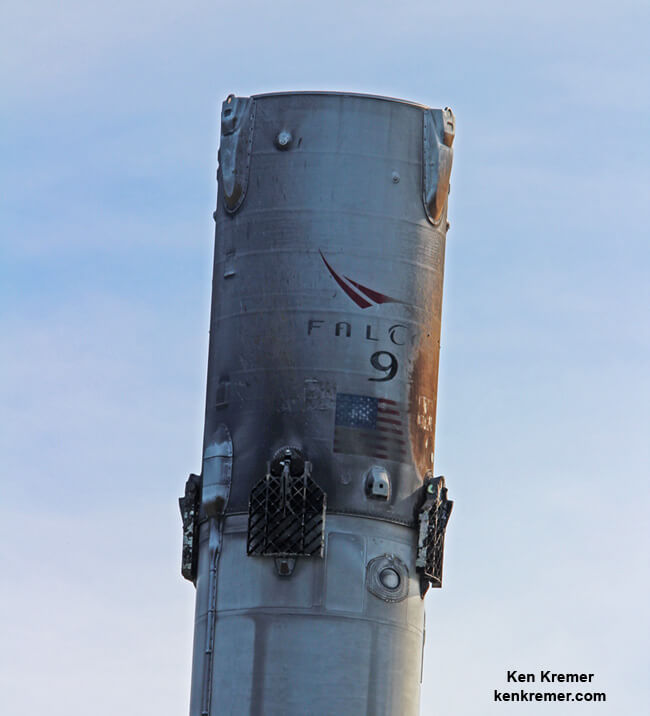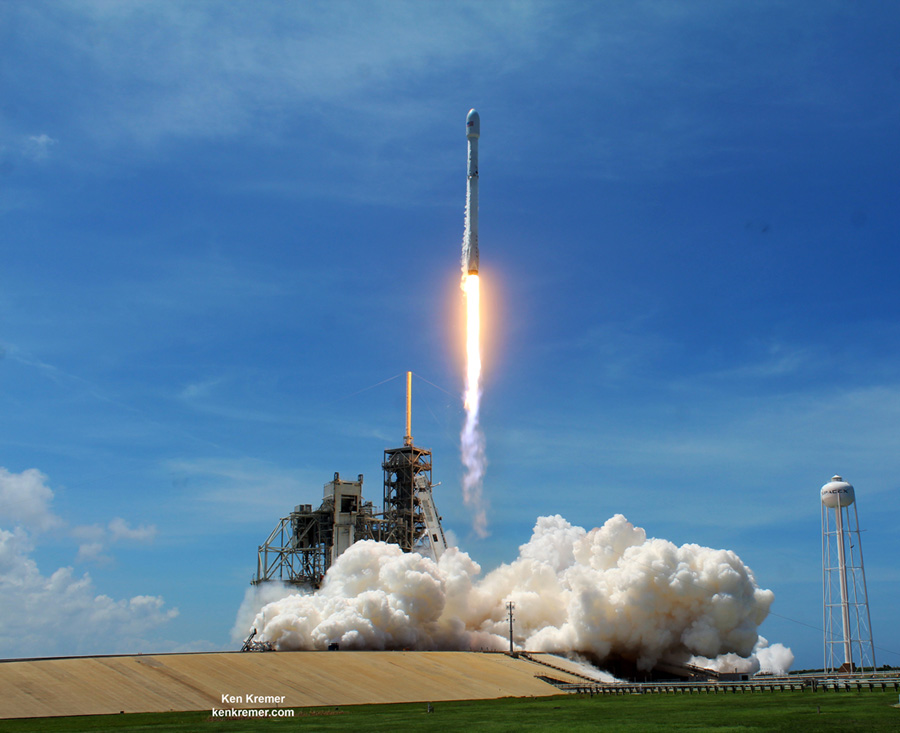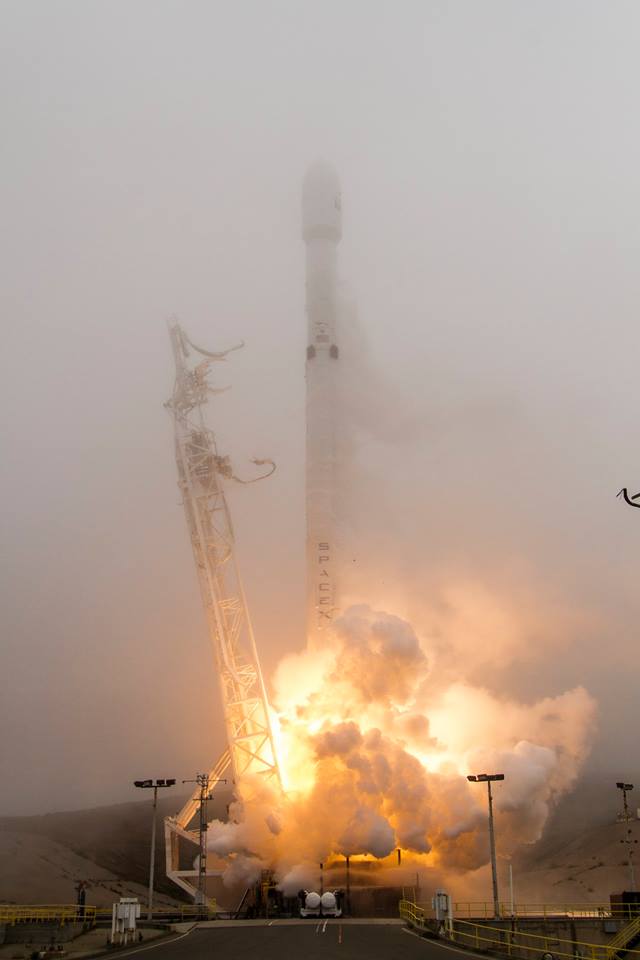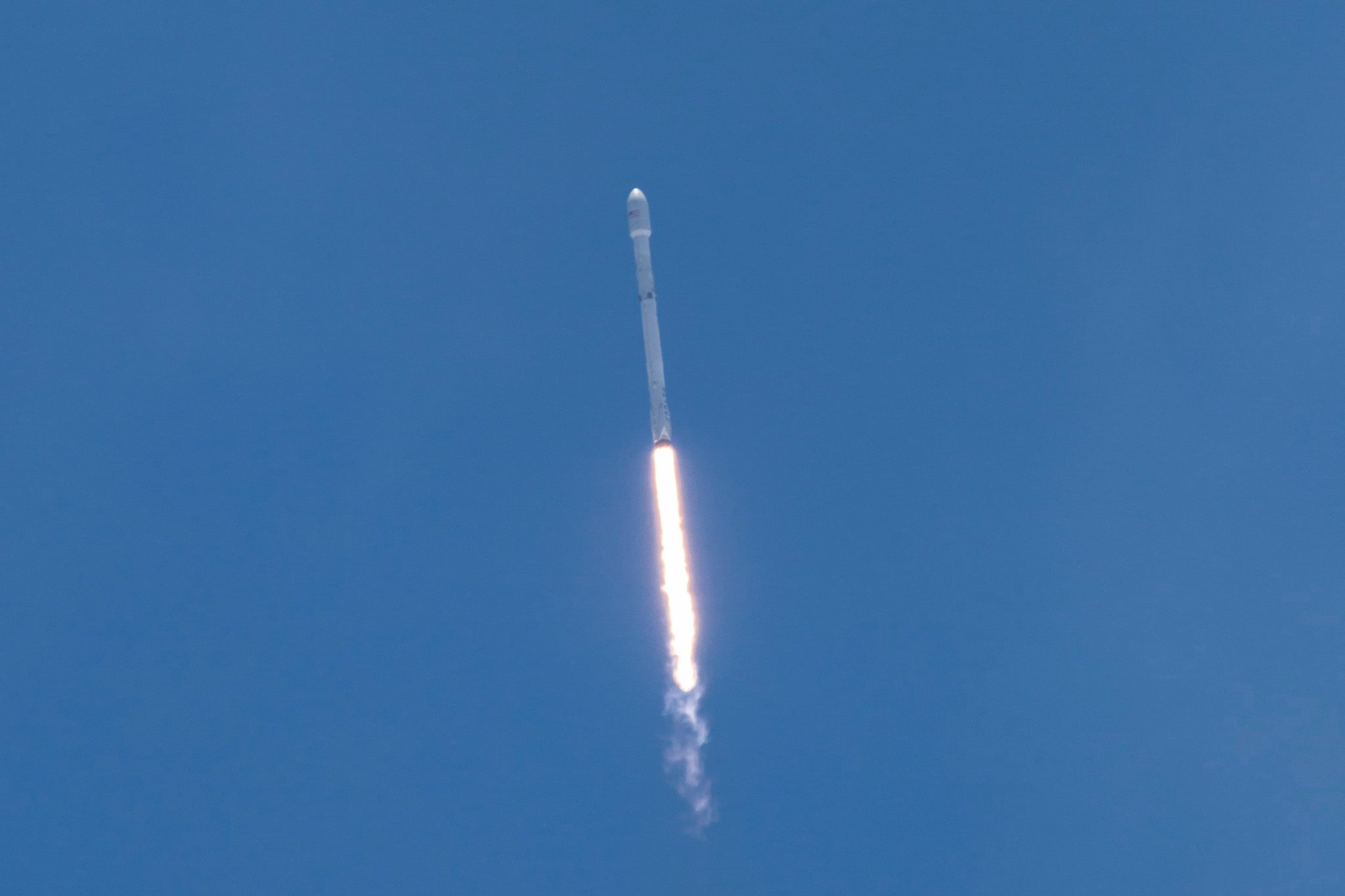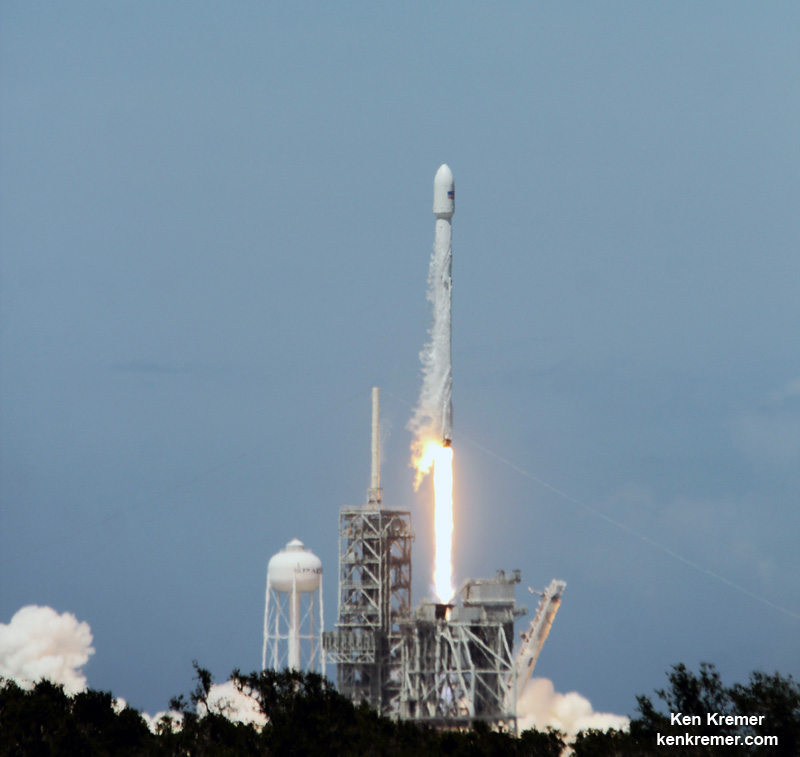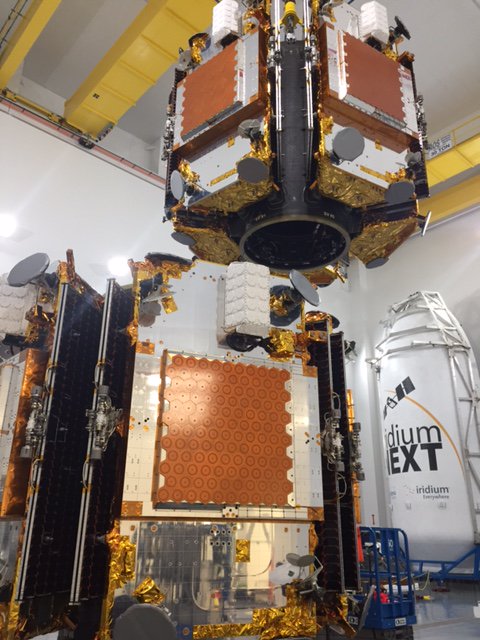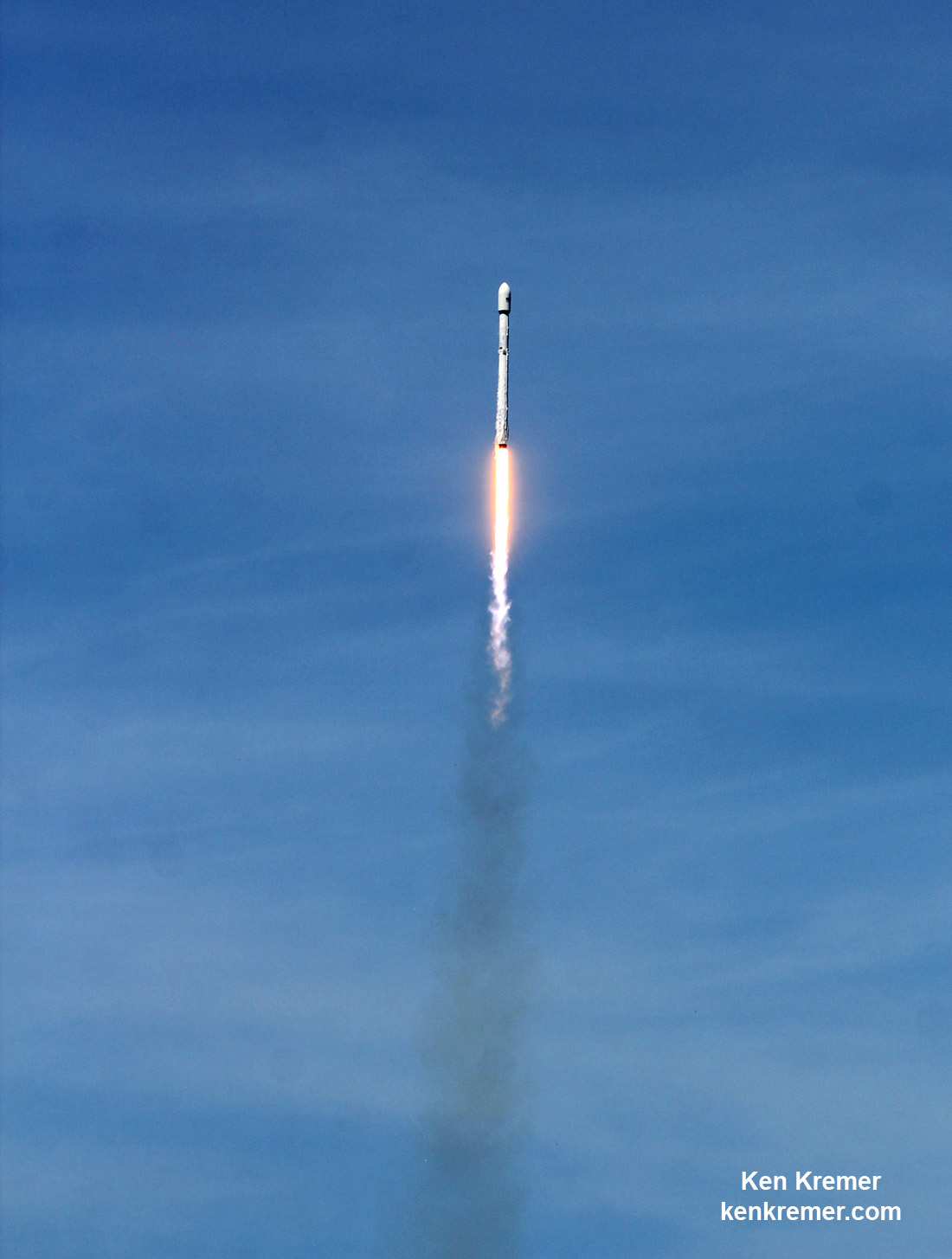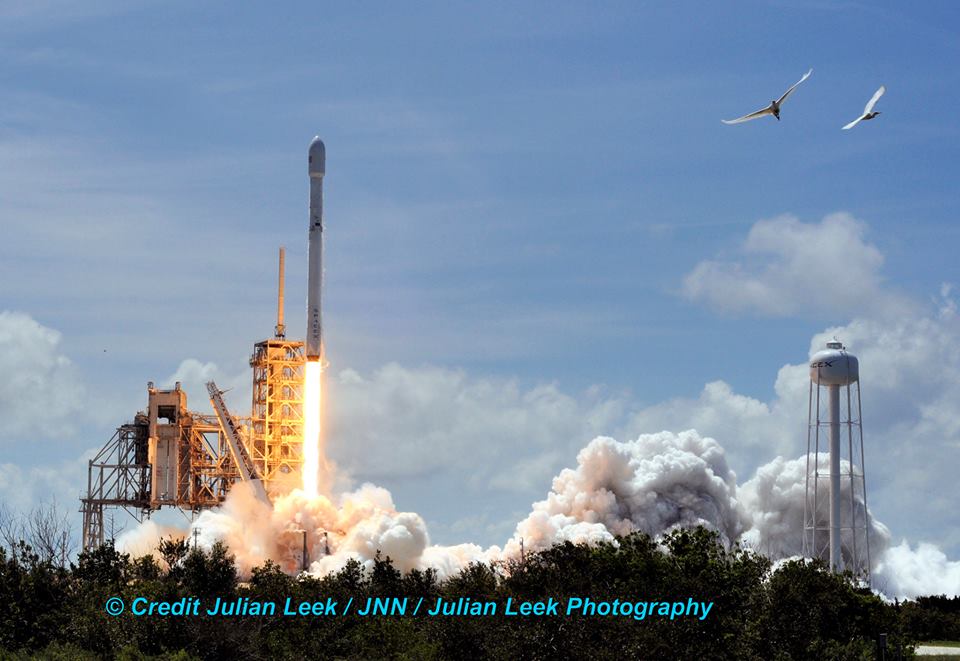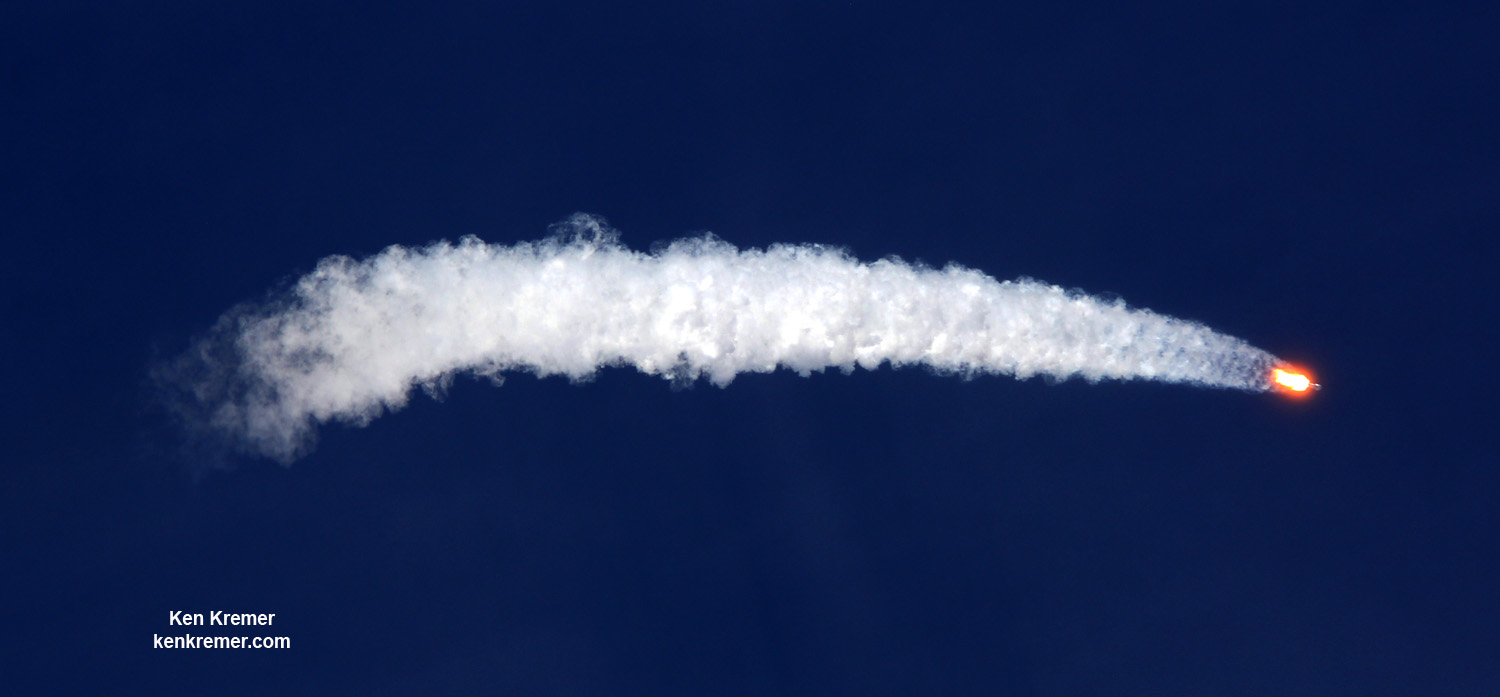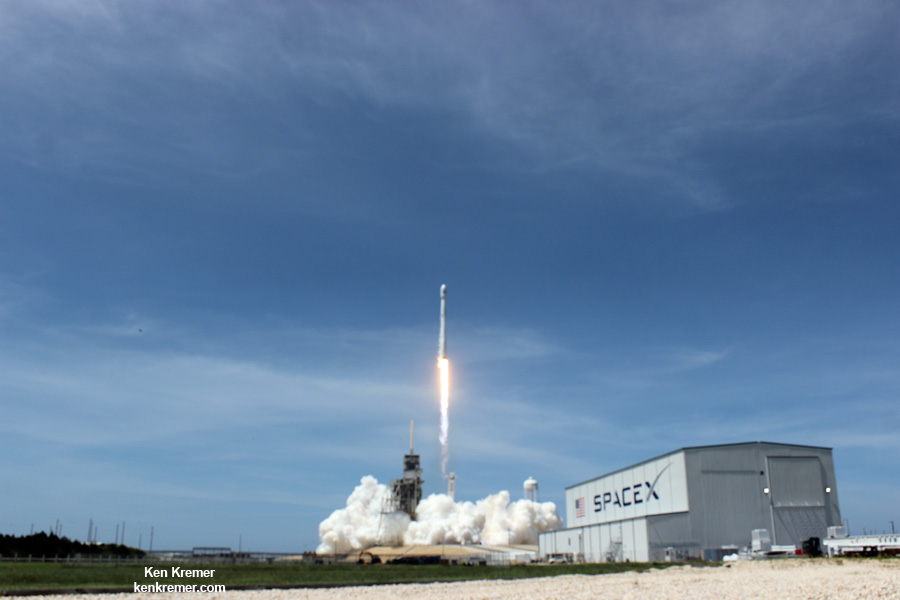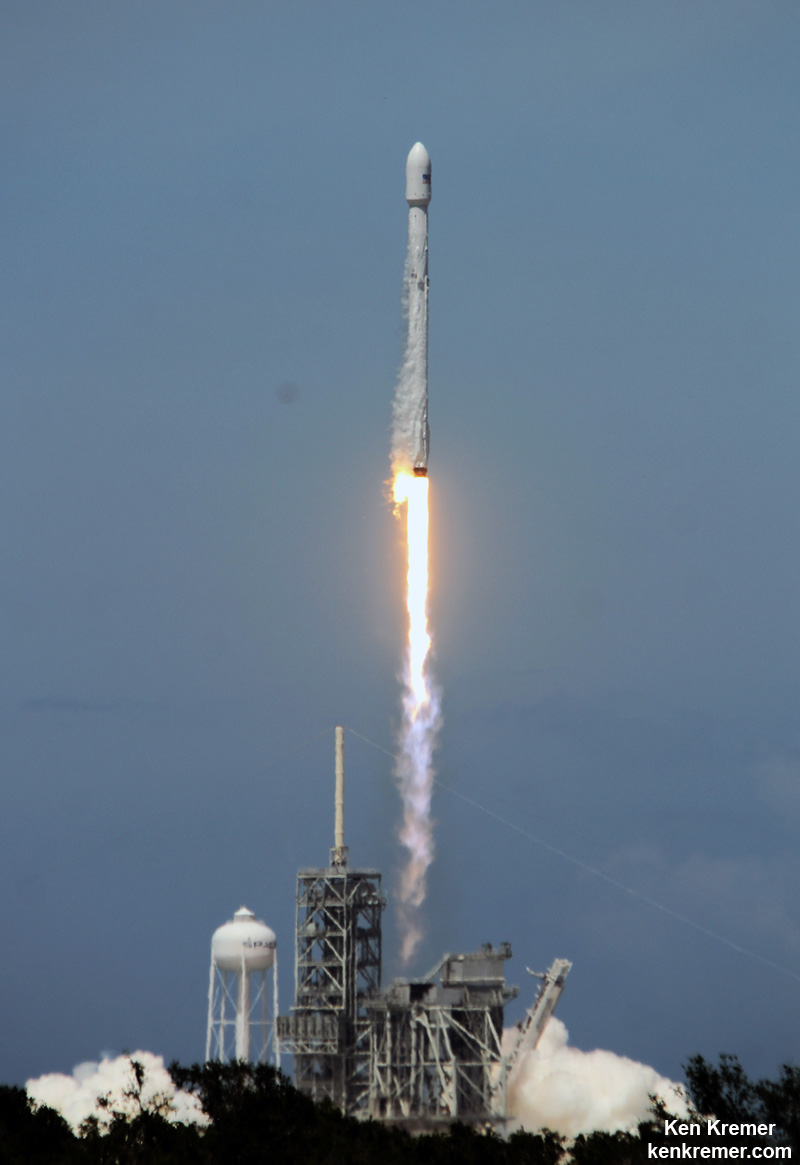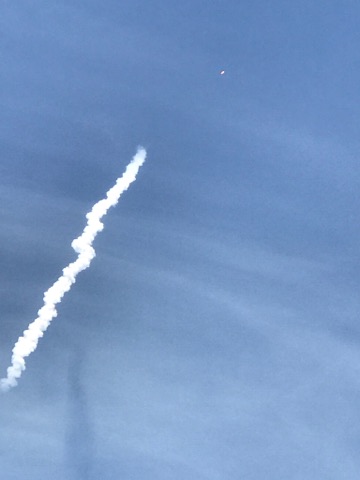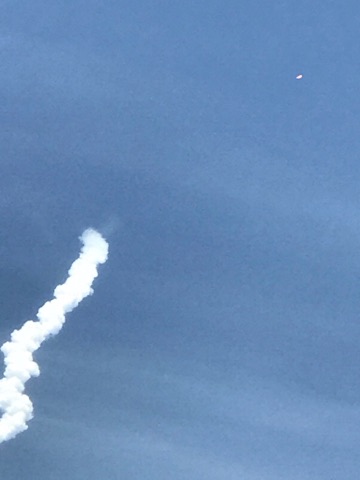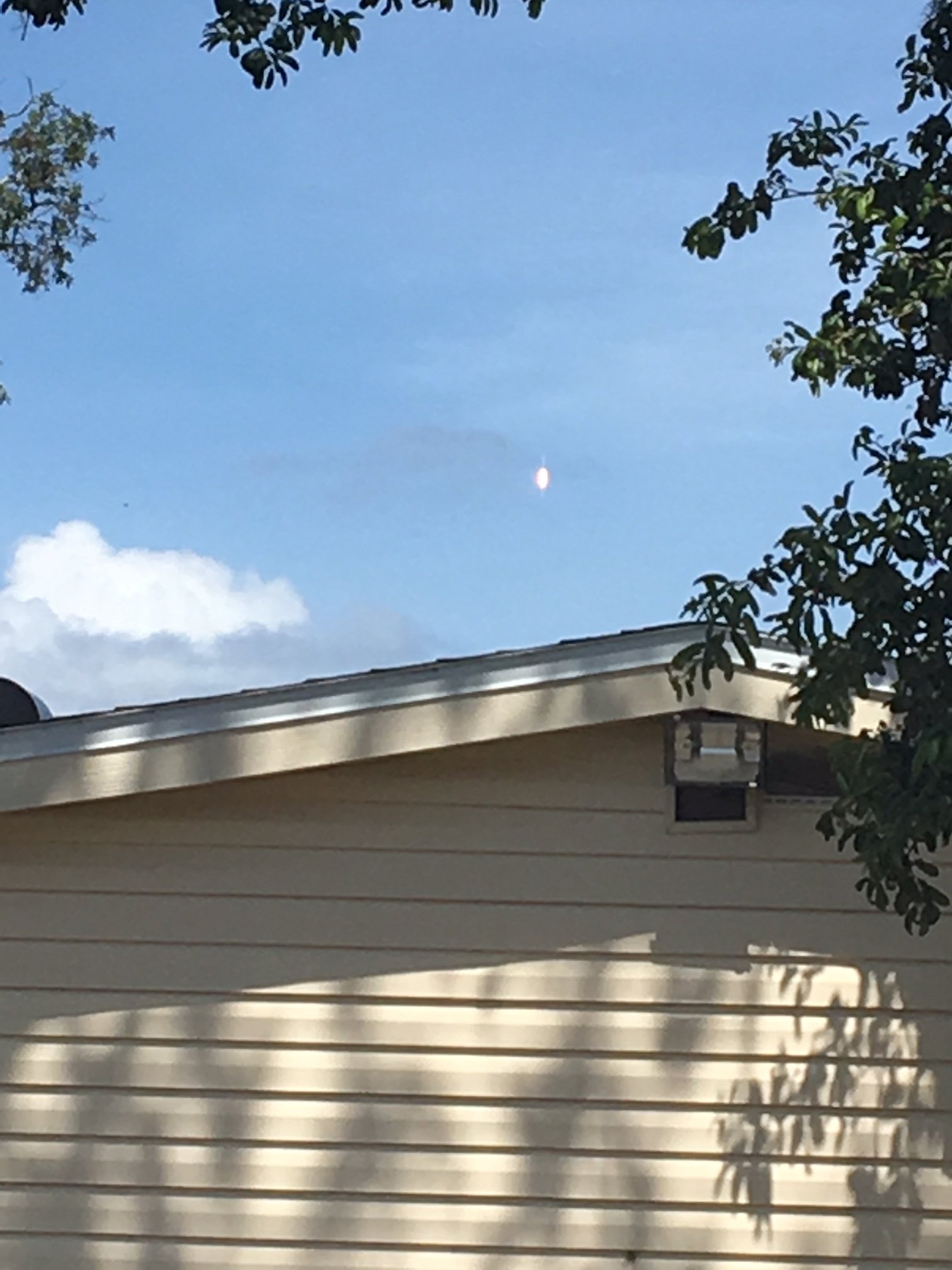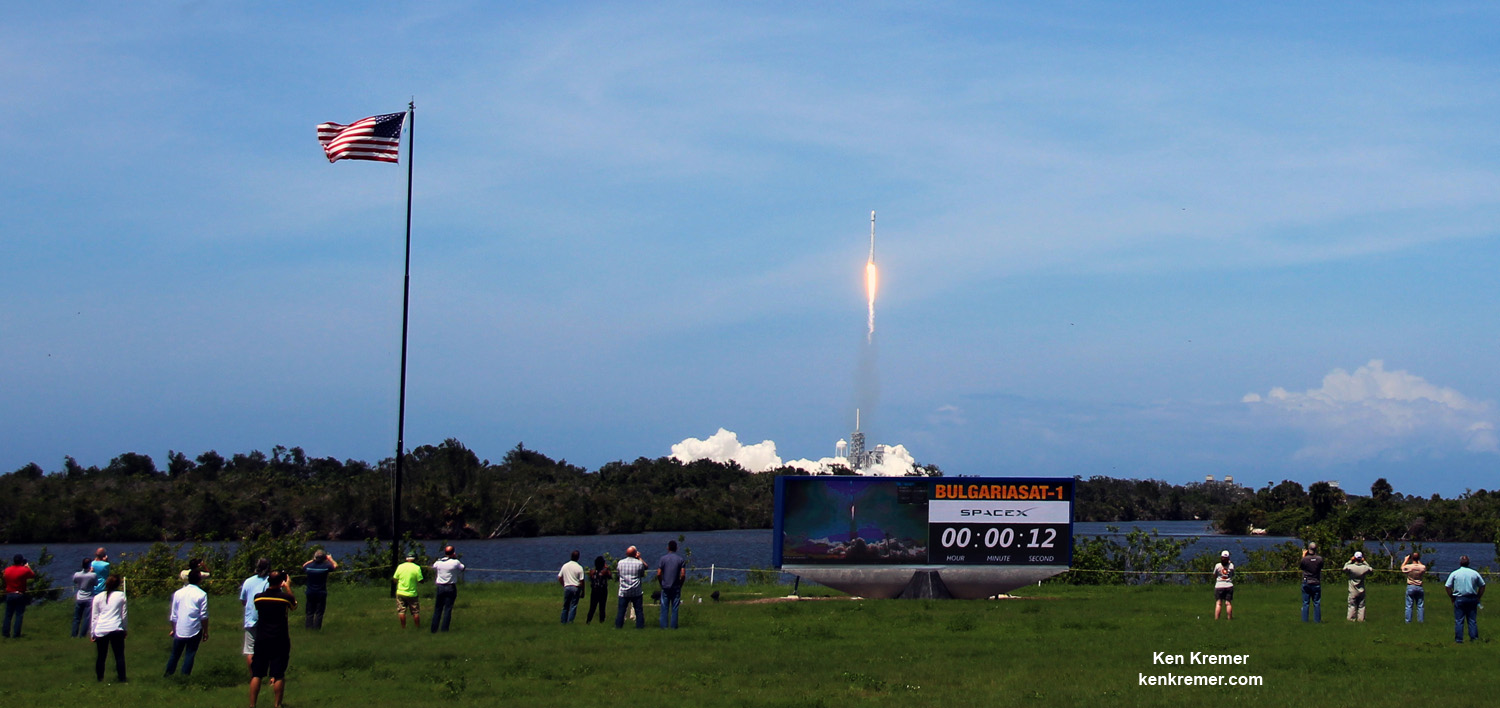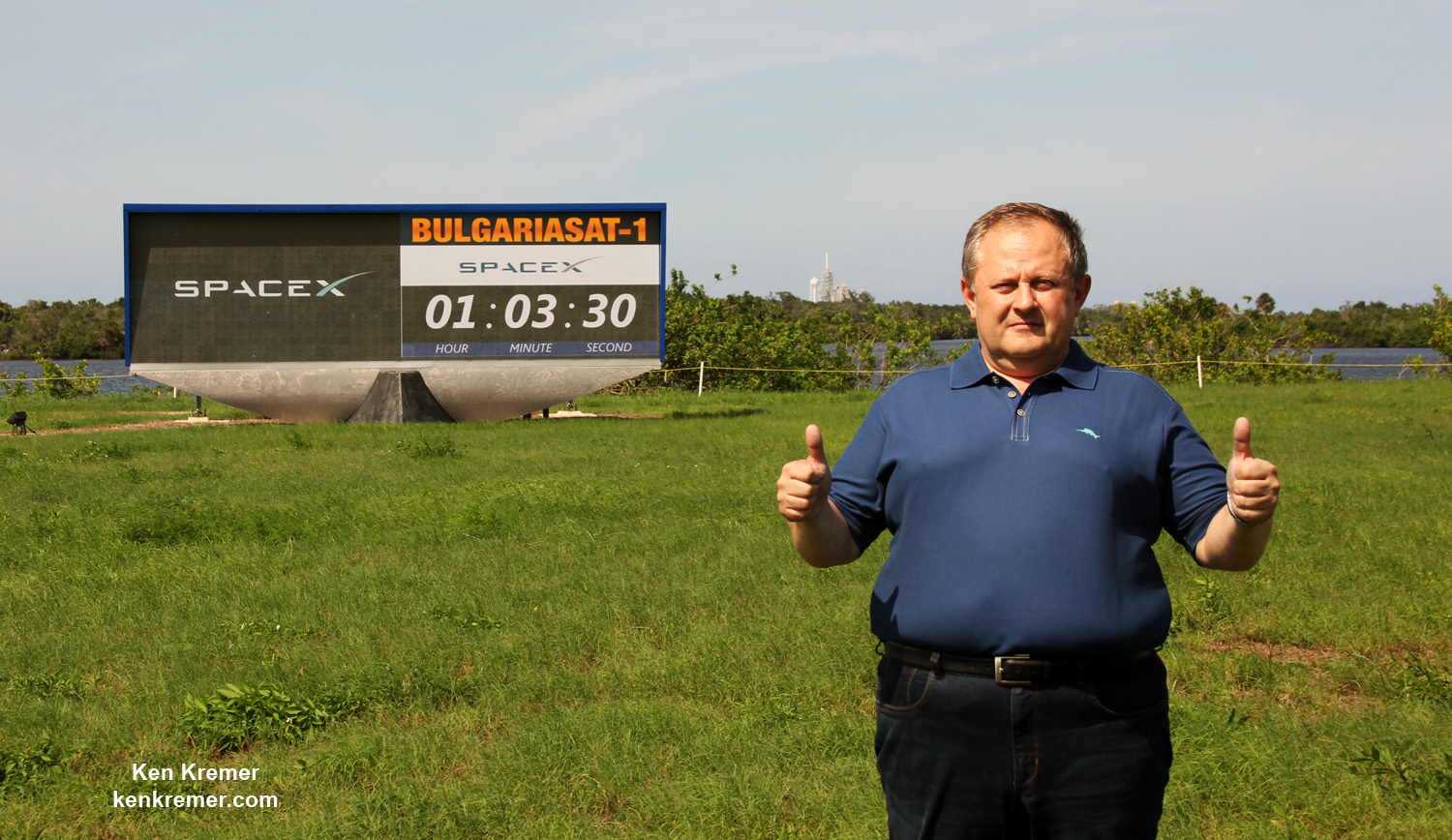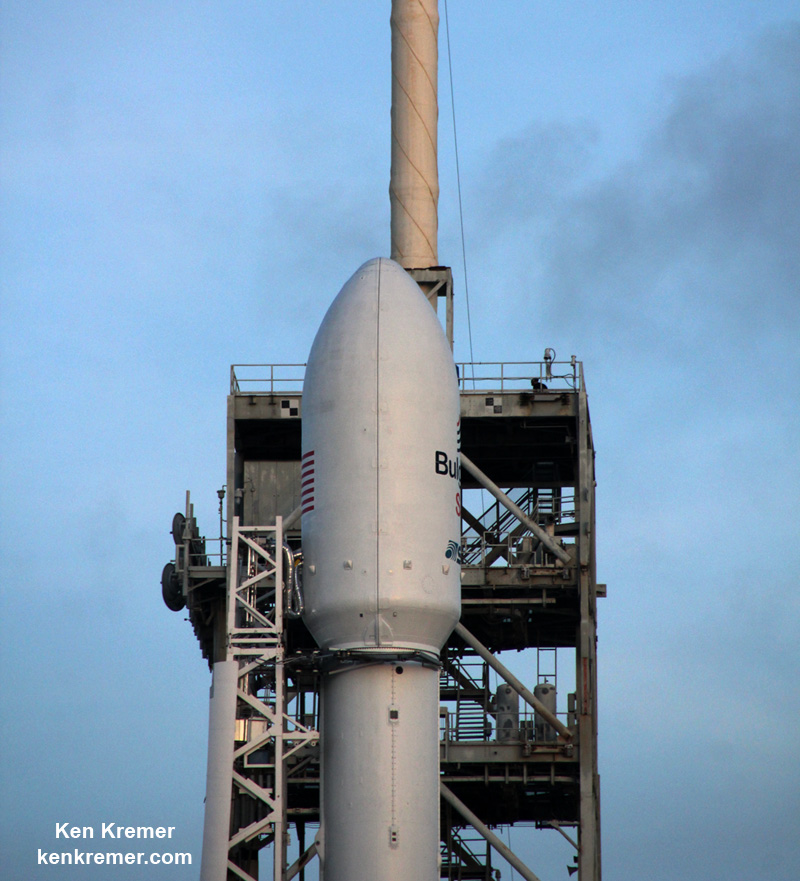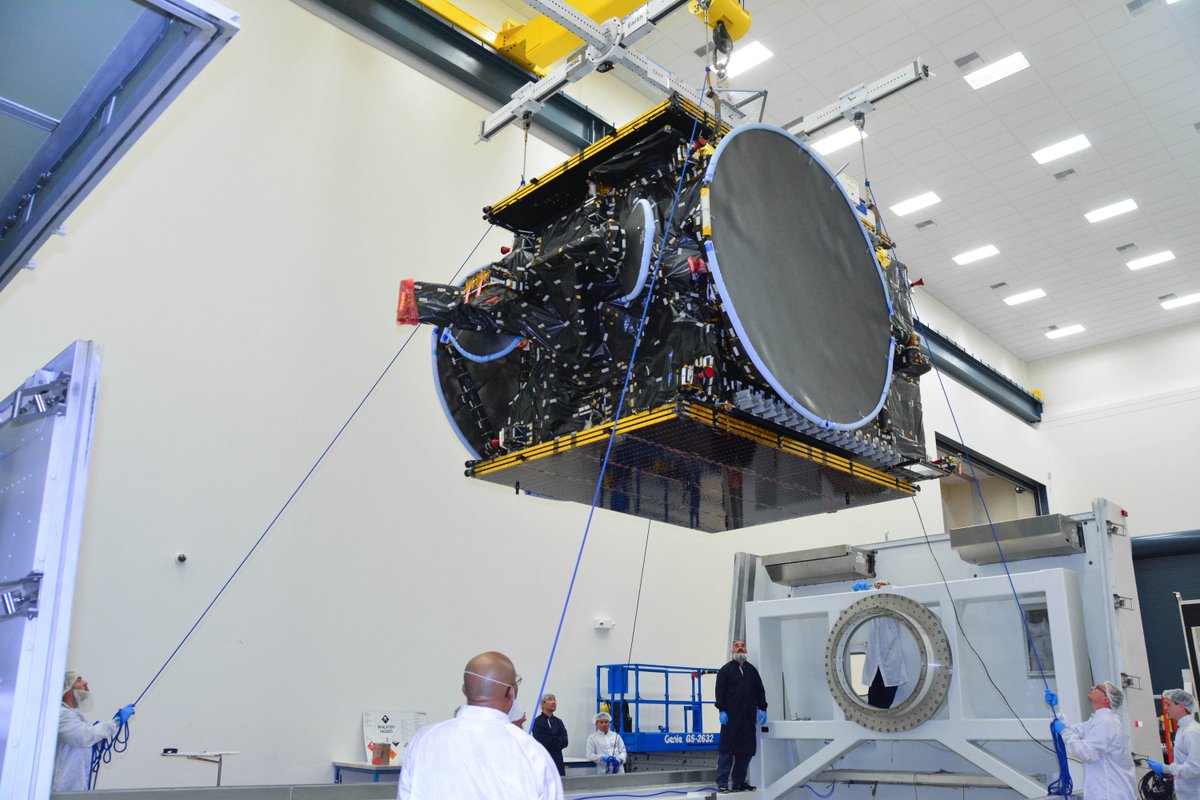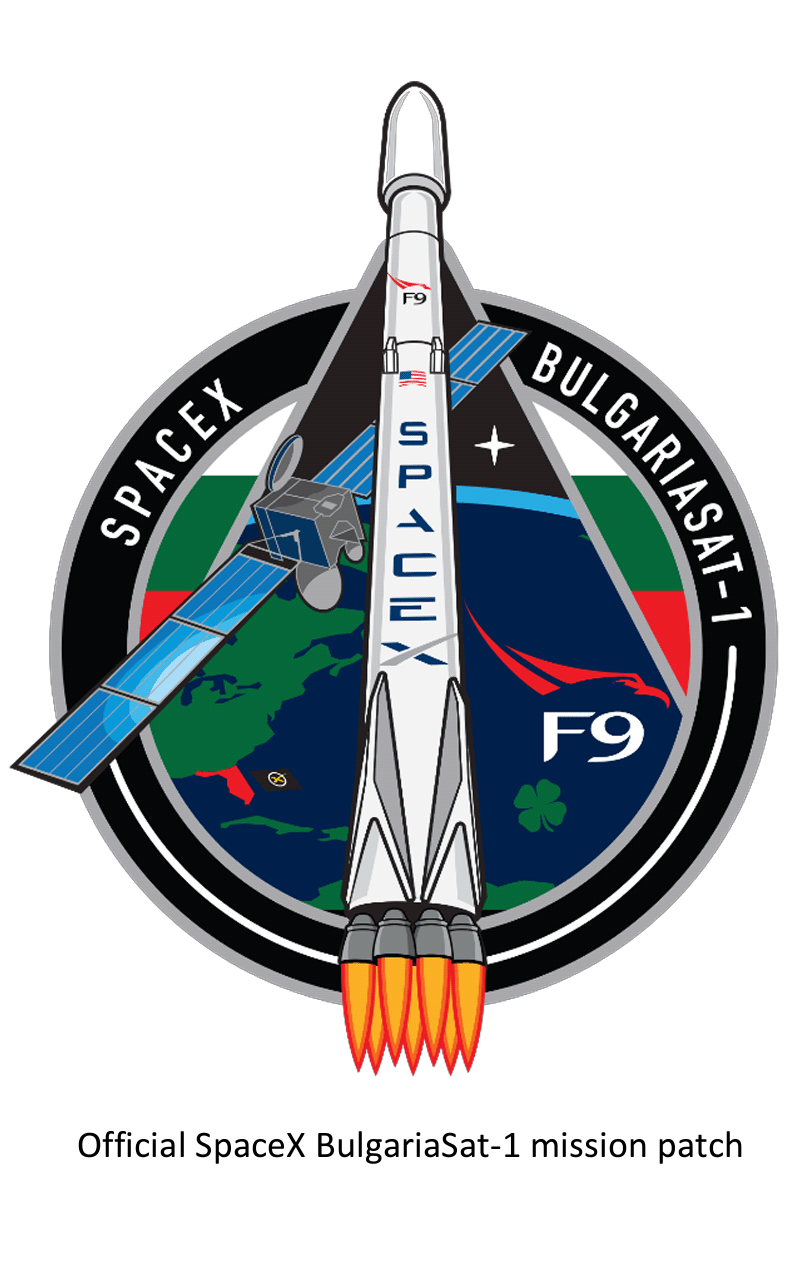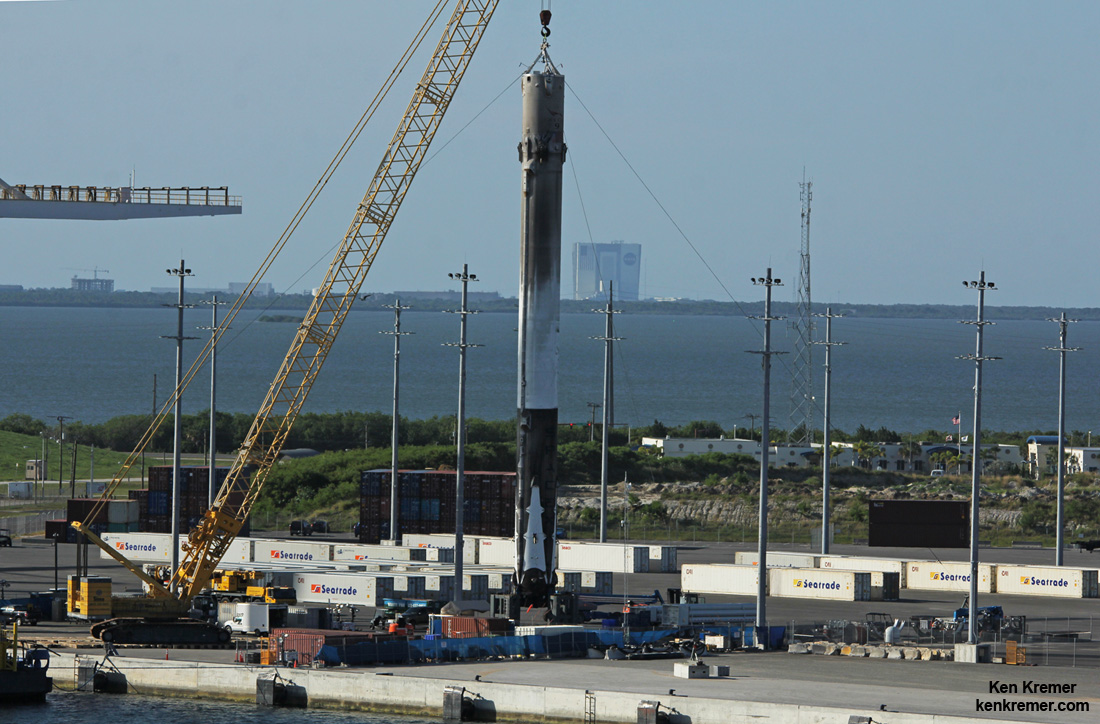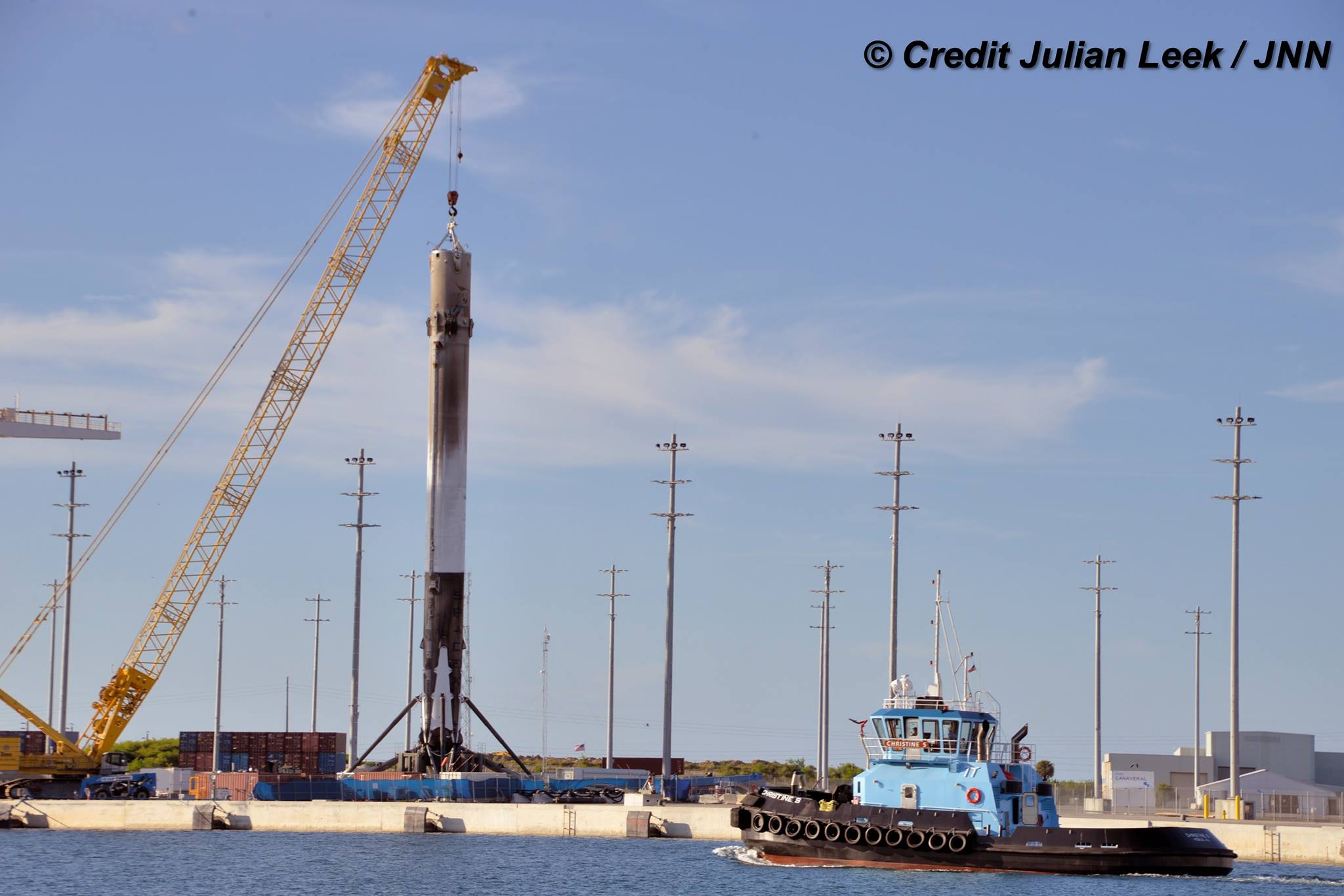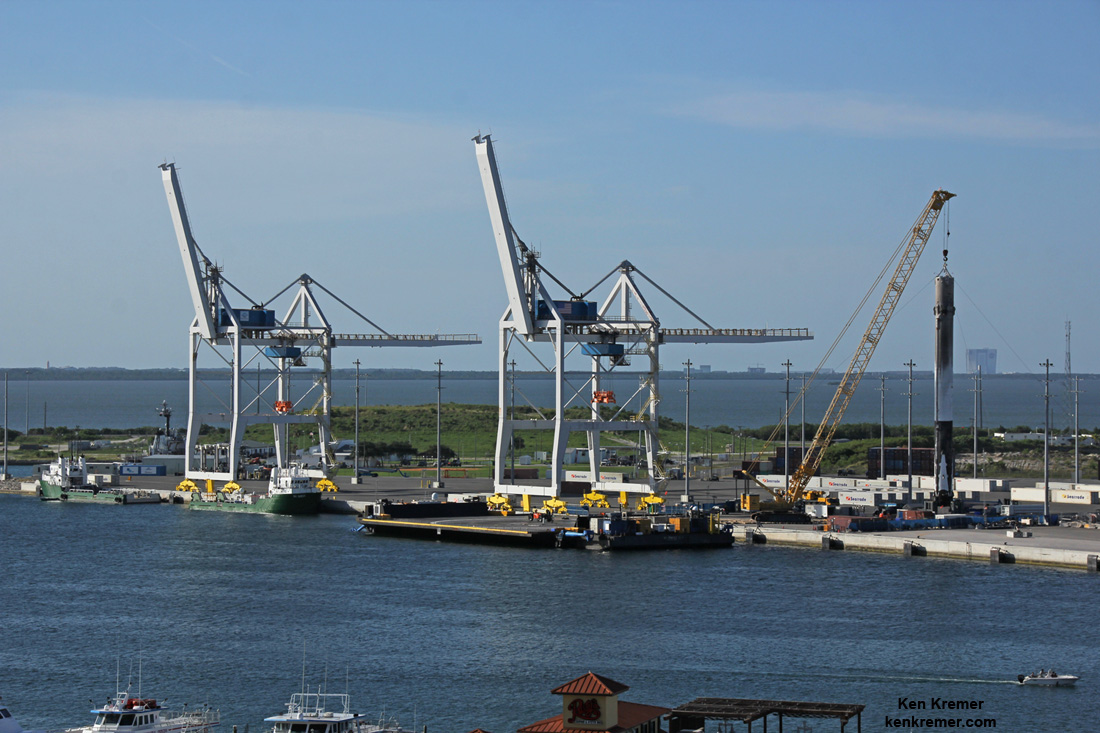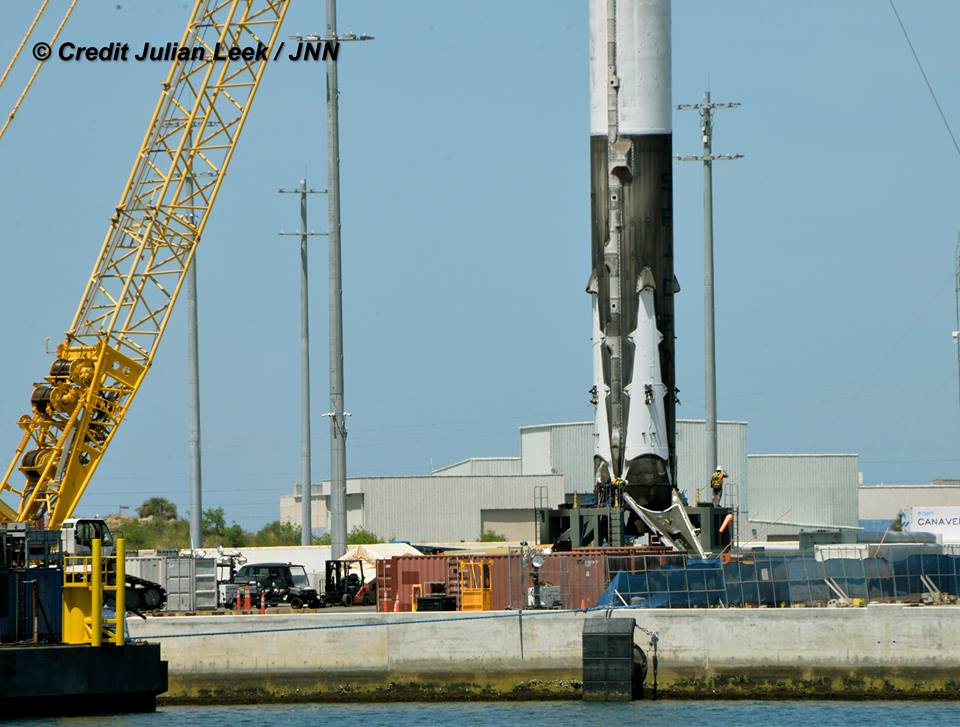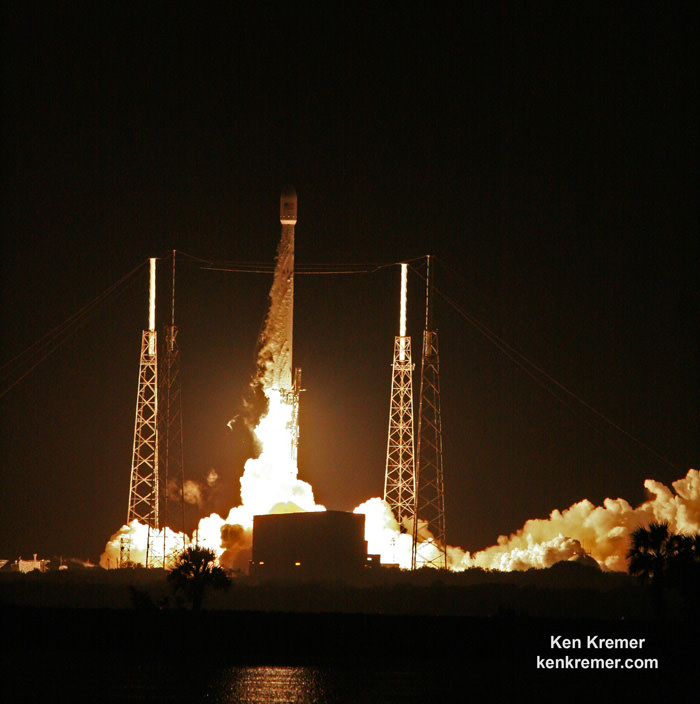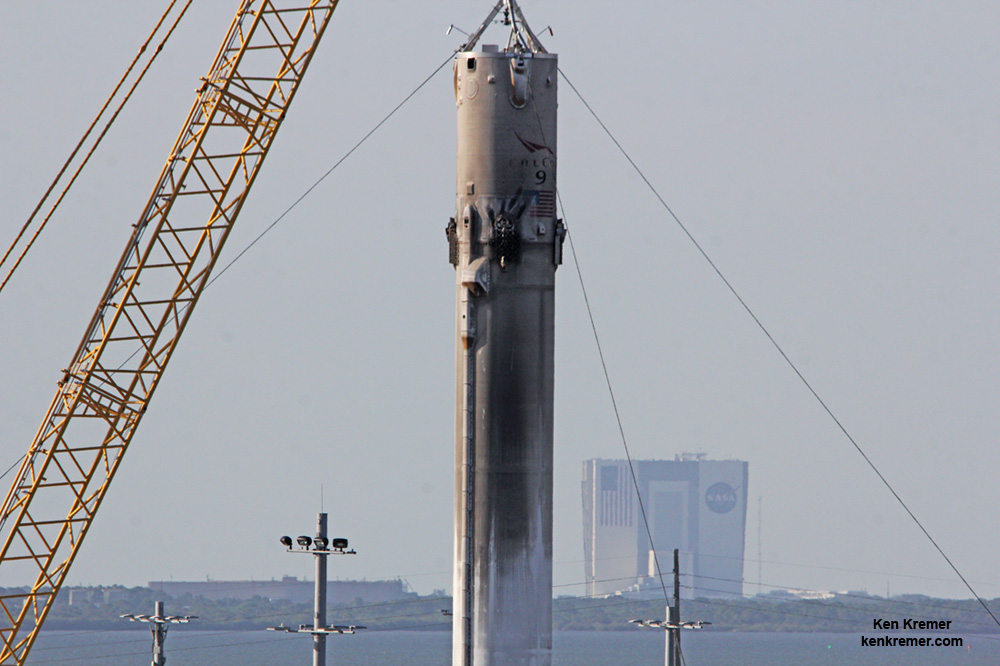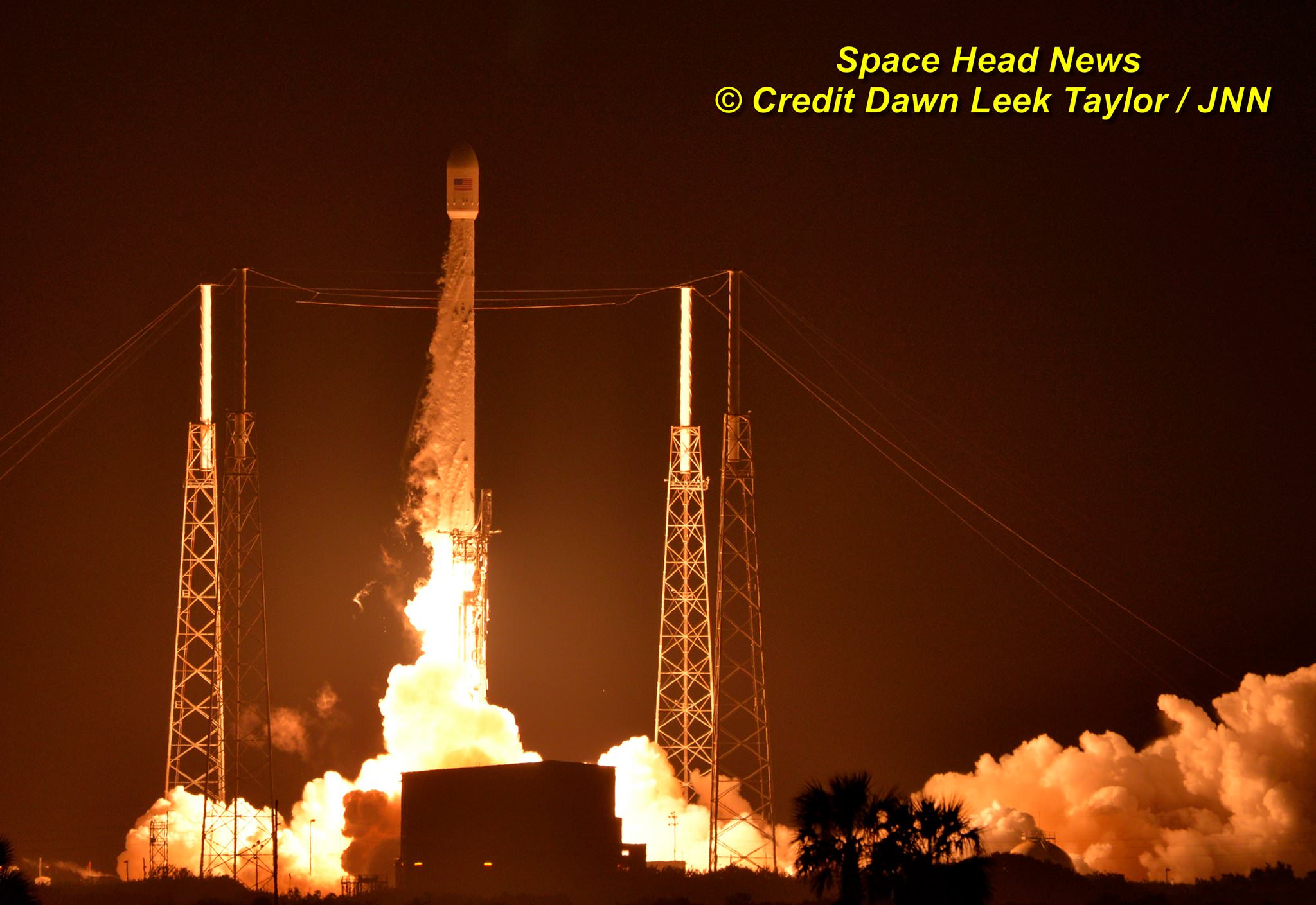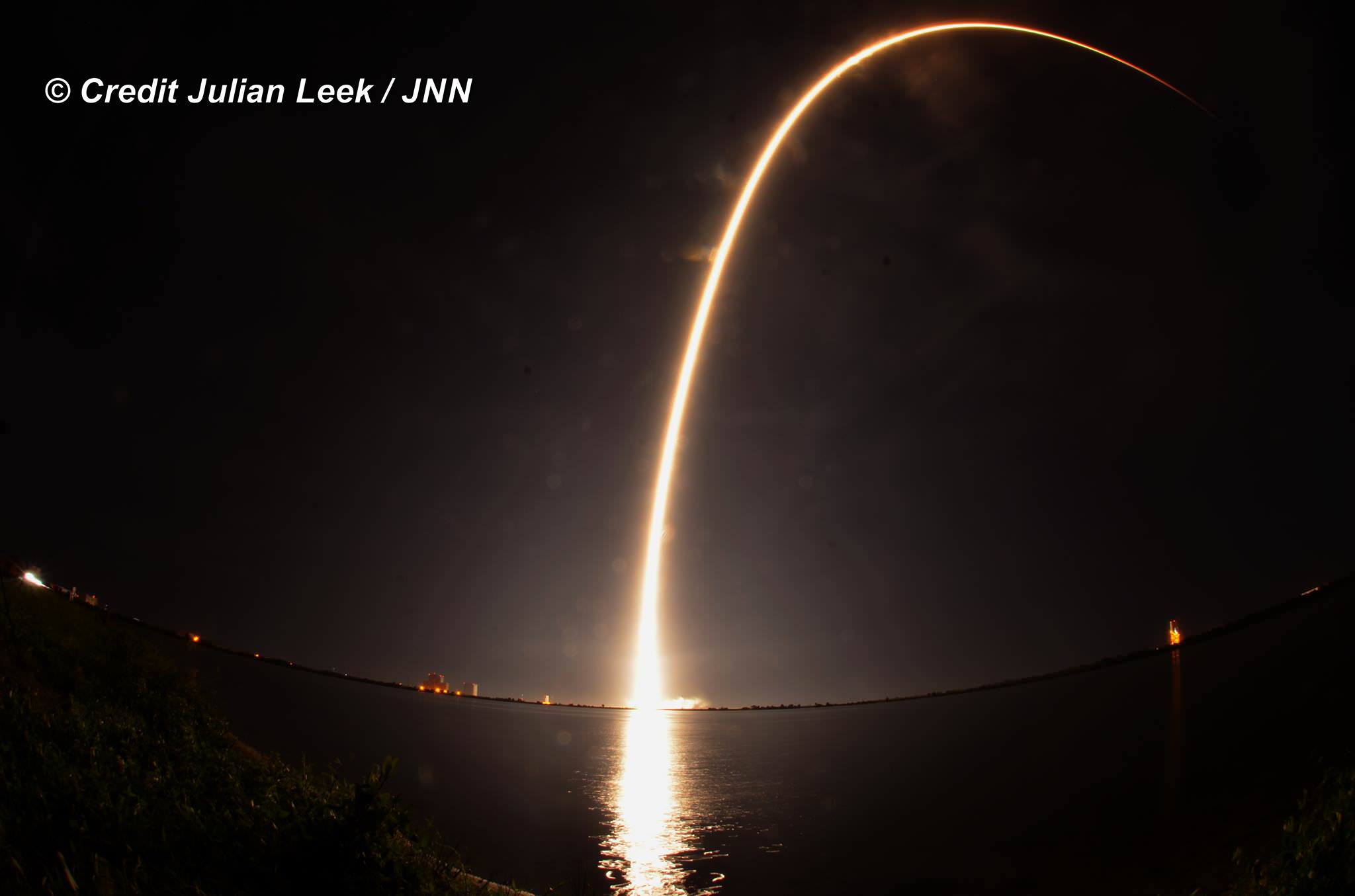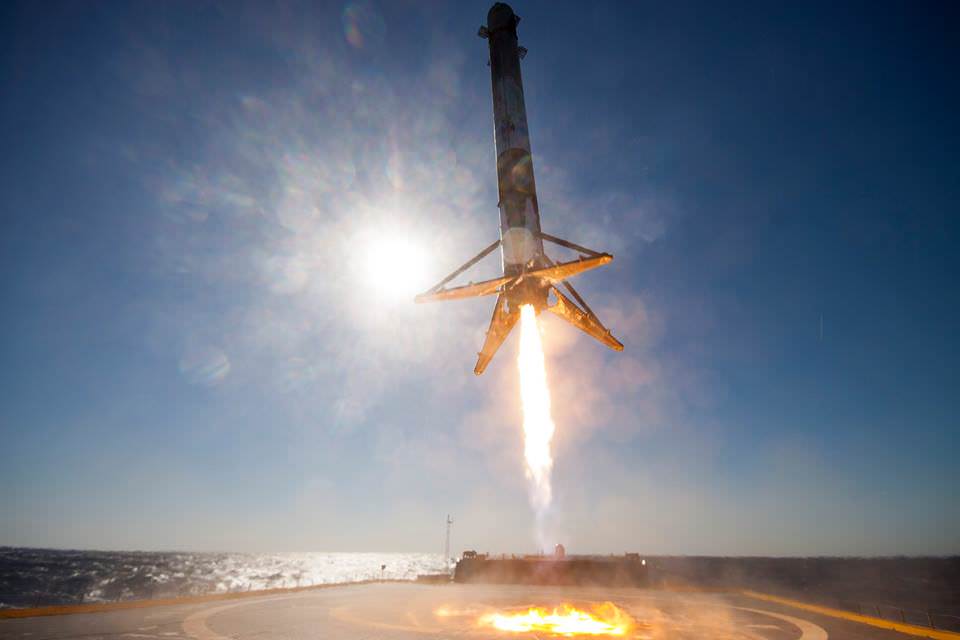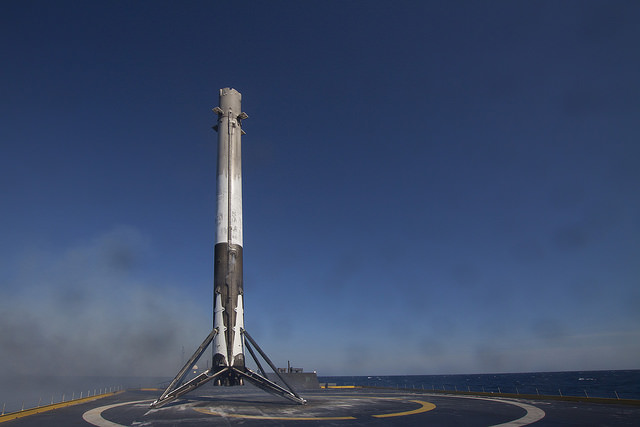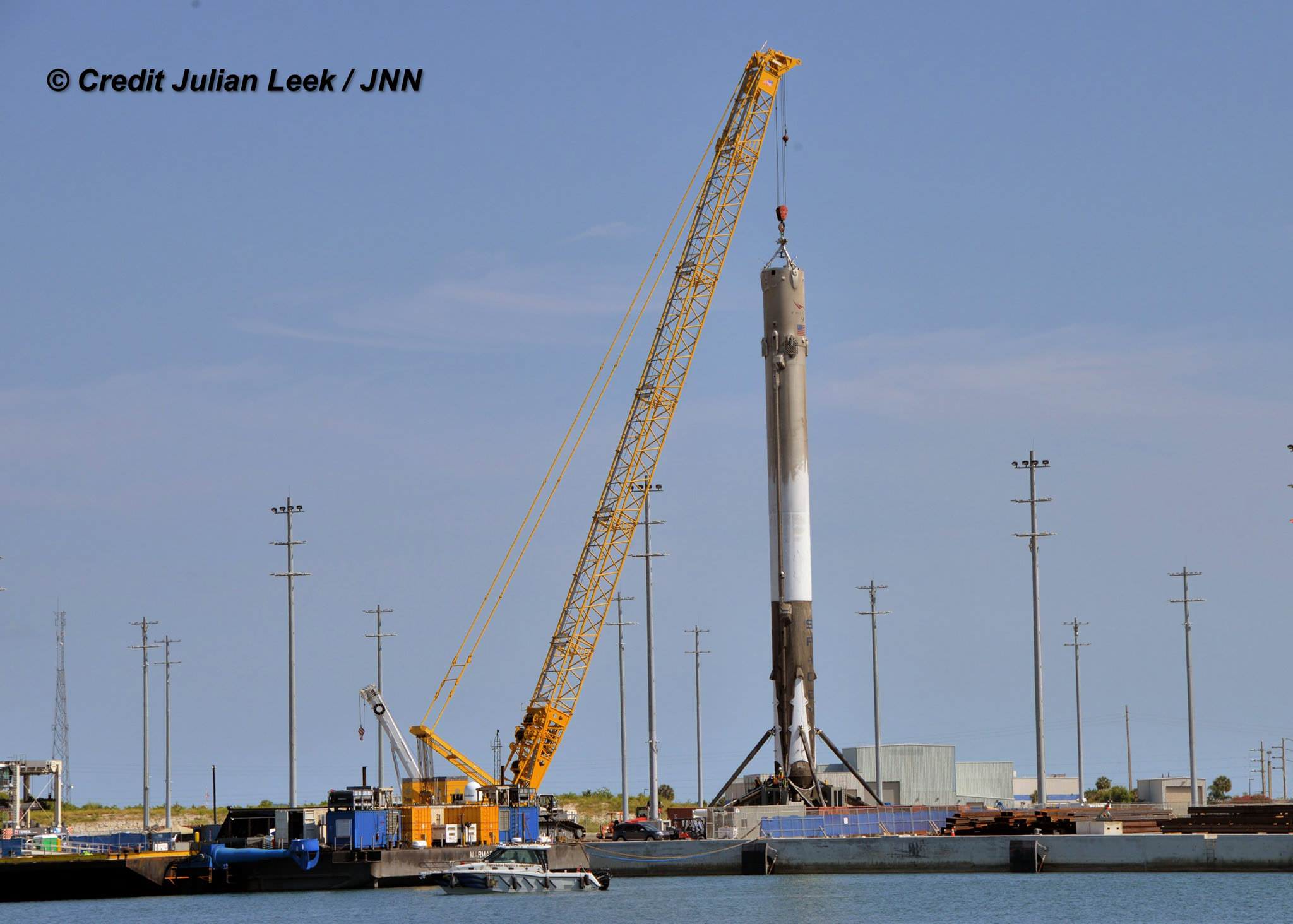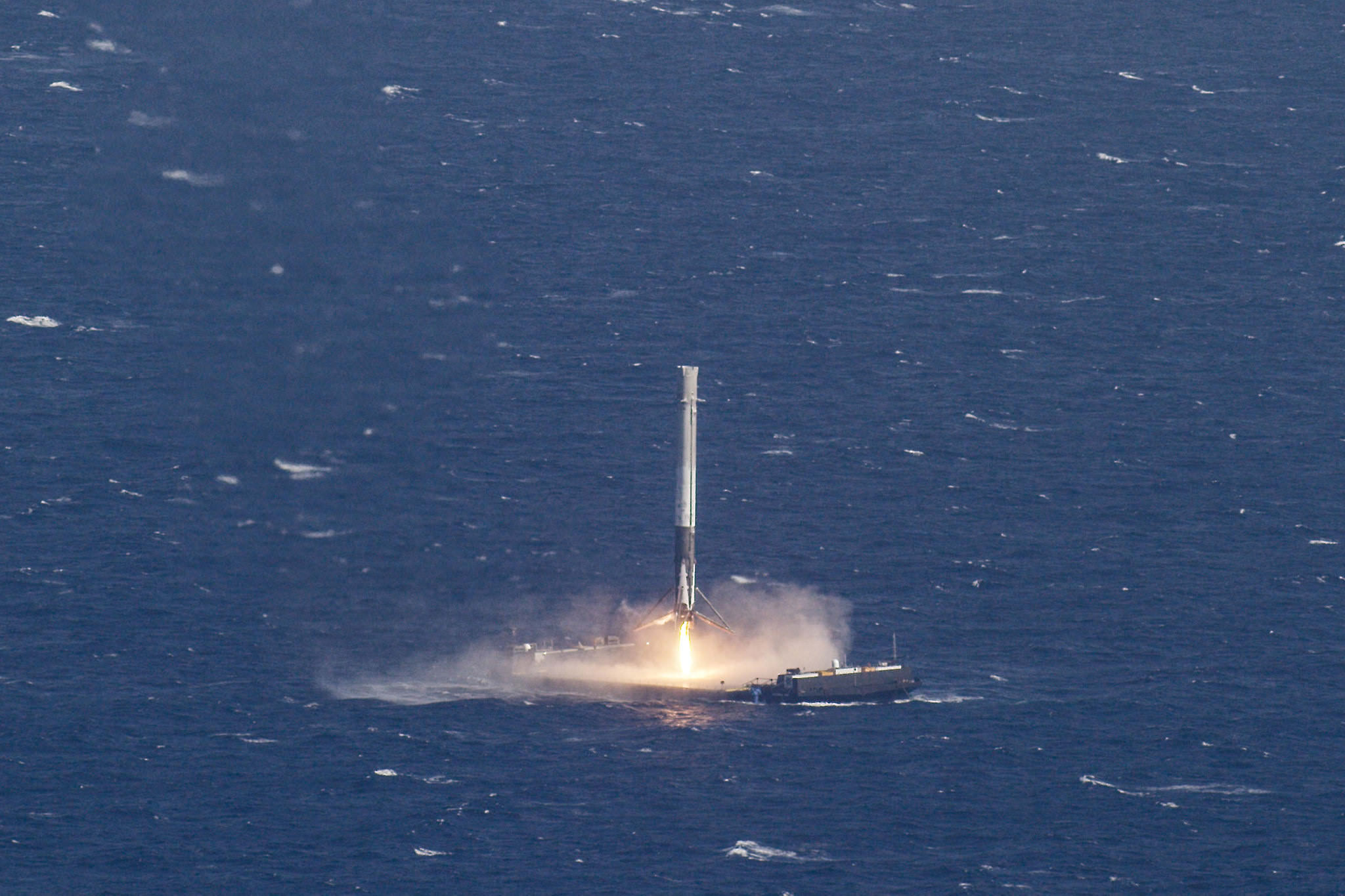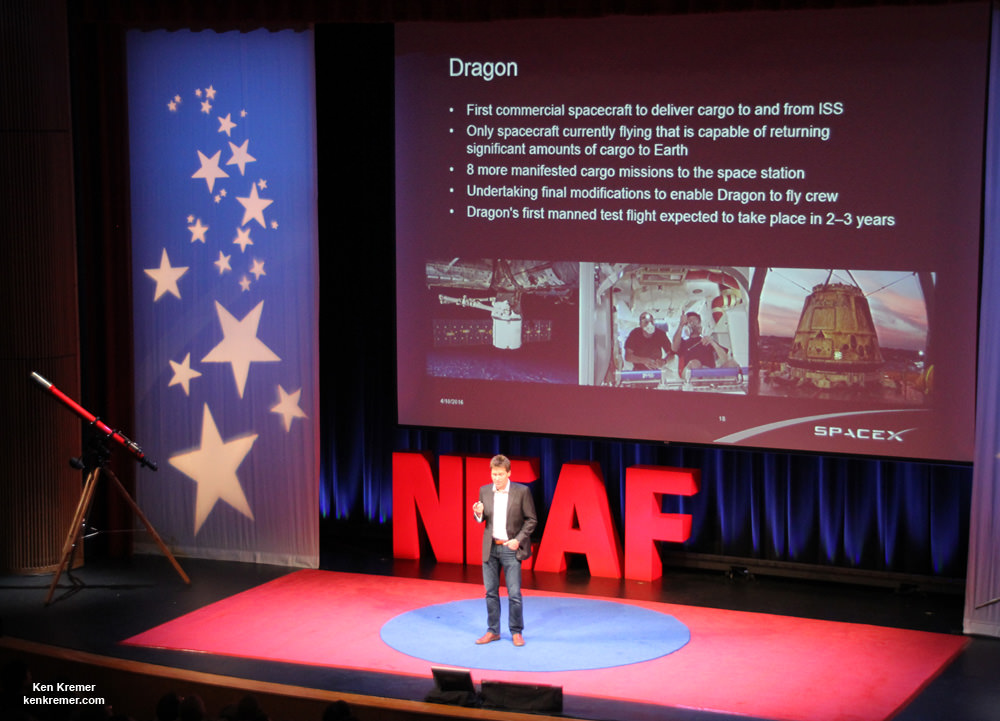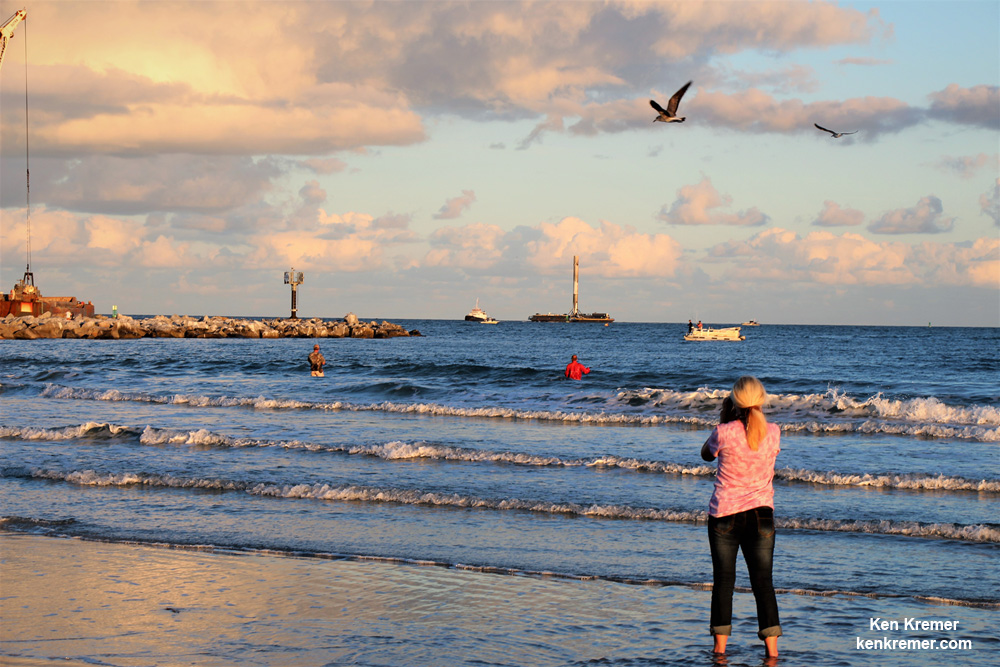
PORT CANAVERAL/KENNEDY SPACE CENTER, FL – ‘The SpaceX boosters back in town! The boosters back in town!’ paraphrasing the popular lyrics of the hit single from Irish hard rock band Thin Lizzy – its what comes to mind with the speedy cadence of ‘launch, land and relaunch’ firmly established by CEO Elon Musk’s hard rocking crew of mostly youthful rocket scientists and engineers.
Barely three days after successfully launching the commercial KoreaSat-5A telecomsat on Monday Oct 30, the SpaceX Falcon 9 first stage booster that did the heavy lifting to orbit generating 1.7 million pounds of liftoff thrust – arrived back in town Thursday, Nov. 2 or more specifically back into Port Canaveral, Florida.
“Guess who’s back in town?” – the song continues – well its the Falcon 9 that reached the edge of space on Halloween Eve while traveling several thousand miles per hour, flipped around like a witches broom and carried out a pinpoint propulsive and upright touchdown of what amounts to a stick on a board in the middle of the Atlantic Ocean. Just amazing!
Floating atop the football field sized platform upon which it soft landed 8.5 minutes after the two stage Falcon 9 lifted off at 3:34 p.m. EDT (1934 GMT) from seaside Launch Complex 39A at NASA’s Kennedy Space Center in Florida. The 16 story tall booster arrived back into the mouth of Port Canaveral late Thursday at sunset – as witnessed up close by myself and several space journalist colleagues.
Check out our expanding photo and video gallery compiled here of the boosters arrival into Port on the OCISLY droneship. The gallery is growing so check back again for more up close looks of the ocean arrival, sailing and docking.
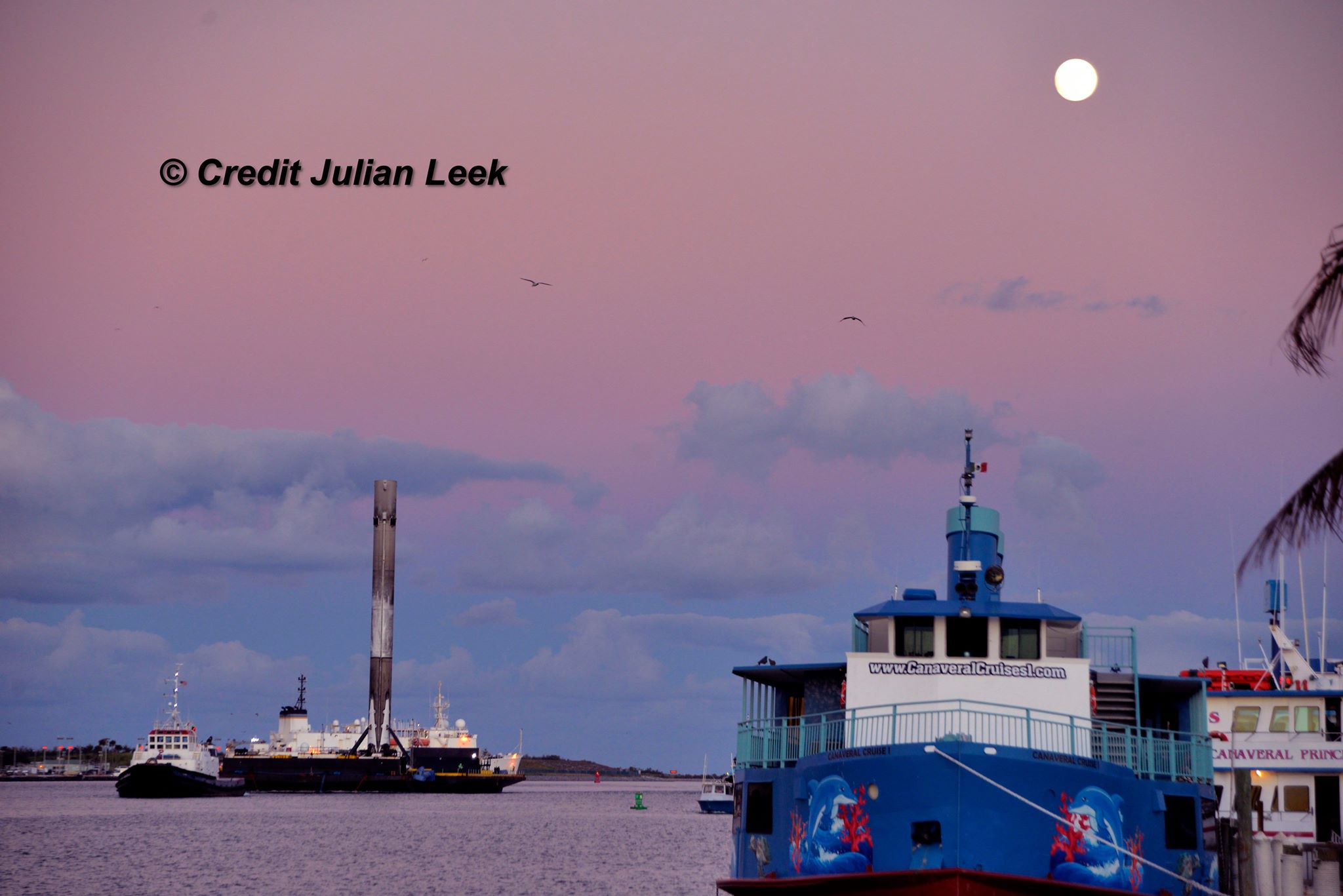
Furthermore the four landing legs that made the landing sequence possible – have already been quickly detached by workers this afternoon, as shown here with additional incredible up close imagery.
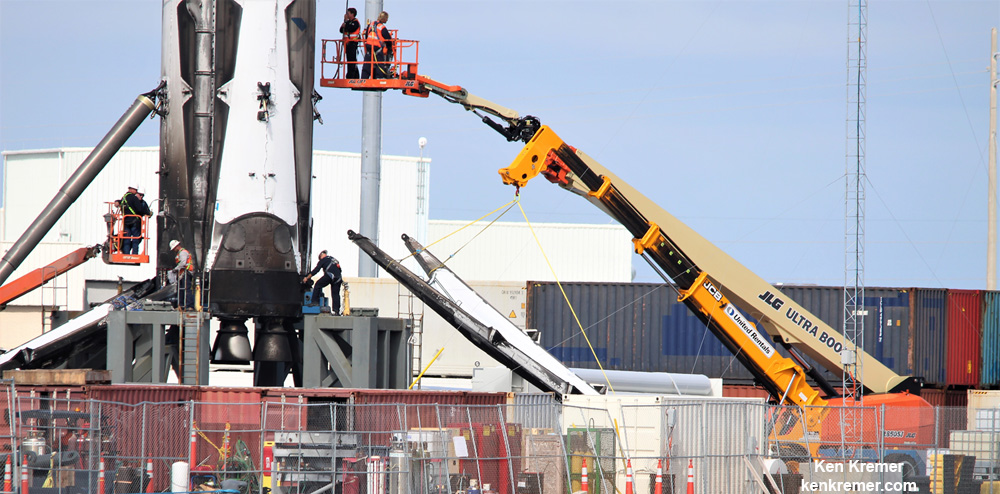
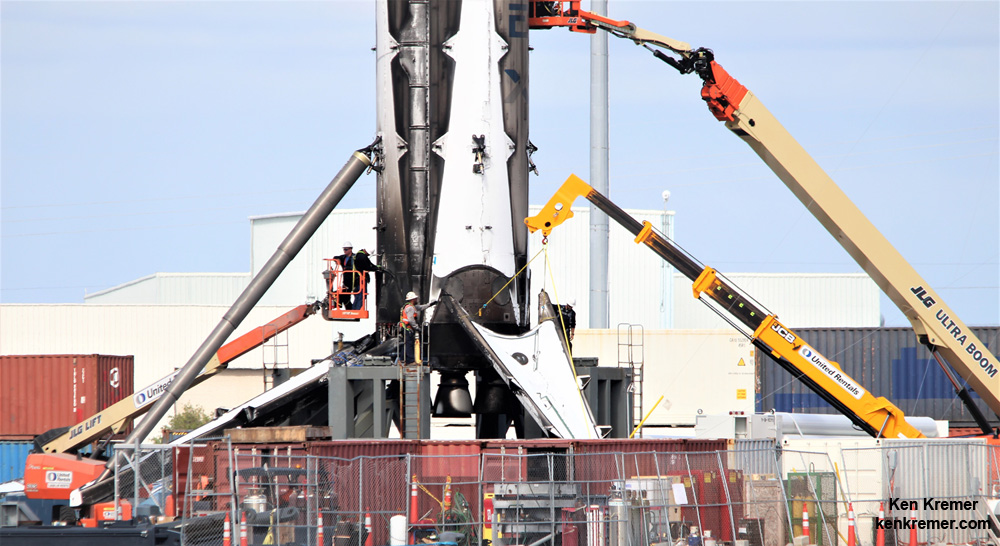
Plus also featured are lots of imagery of the booster sailing through the narrow channel of Port Canaveral – often past seemingly oblivious spectators and pleasure craft who have no idea what they are seeing. As well as imagery of work crews processing the booster for the eventual return back onto base.

The 156 foot-tall first stage atop OCISLY was towed from the Atlantic Ocean landing zone located several hundred miles off shore of the Florida’s East coast back into Port Canaveral by a tugboat named “Hawk.”
The Hawk was accompanied by a small naval flotilla of commercial vessels SpaceX leased for the occasion.

In fact with each booster return the SpaceX technicians are progressing faster and faster carrying out the booster processing involving safing, cap and line attachment, leg removal, and lowering the booster for horizontal placement on a specially outfitted lengthy multi-wheeled trailer for hauling back to SpaceX hangar facilities on the Kennedy Space Center and Cape Canaveral Air Force Station.
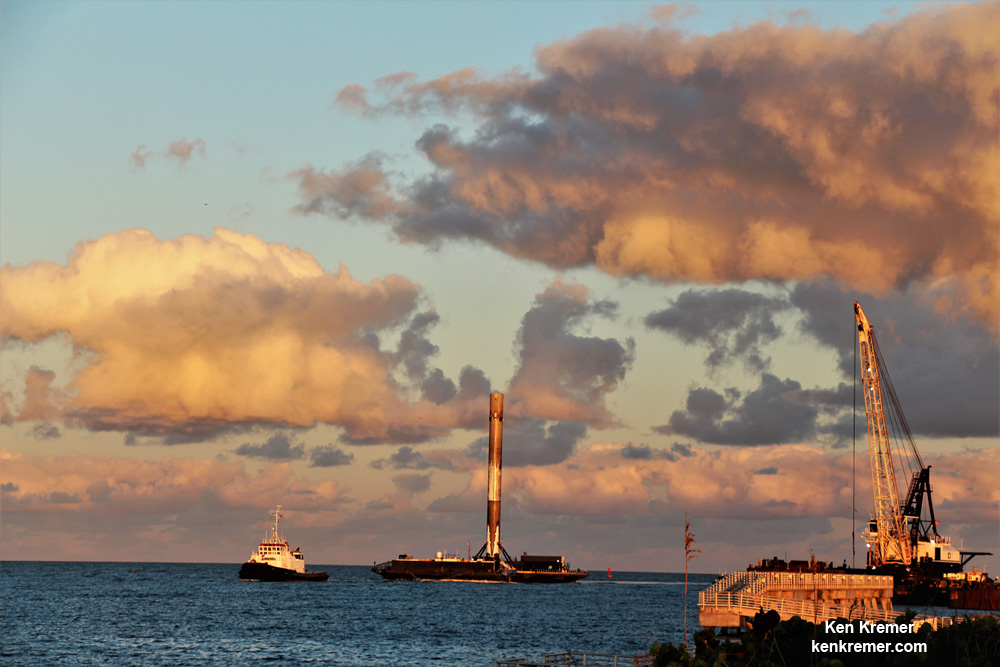
After arriving in port, and sailing through the channel for about 45 minutes the SpaceX flotilla carefully and methodically edged the droneship closer to shore and docked the vessel last night – and the crews got a well deserved rest as the booster basked in the maritime glow producing beautiful water reflection vistas.

The team wasted no time this morning. At the crack of dawn they began the task of attaching a hoisting cap to the top of the first stage.
Shortly after 9 a.m. EDT they craned the booster off OCISLY and onto a restraining pedestal platform on land.
The techs were working fast and making mincemeat of the booster.
They detached the four insect like legs one after another in an operation that looked a lot like a well thought out dissection.
One at a fime over a period about roughly two hour the workers methodically unbolted and detached the legs in 2 pieces. First they they slung a harness around the upper strut and removed it with a small crane. Then they did the same with the lower foot pad.
Altogether the land leg amputation operation took about 2.5 hours.
The now legless Falcon 9 stands erect. It will soon be lowered and placed horizontally for transport back to the base.
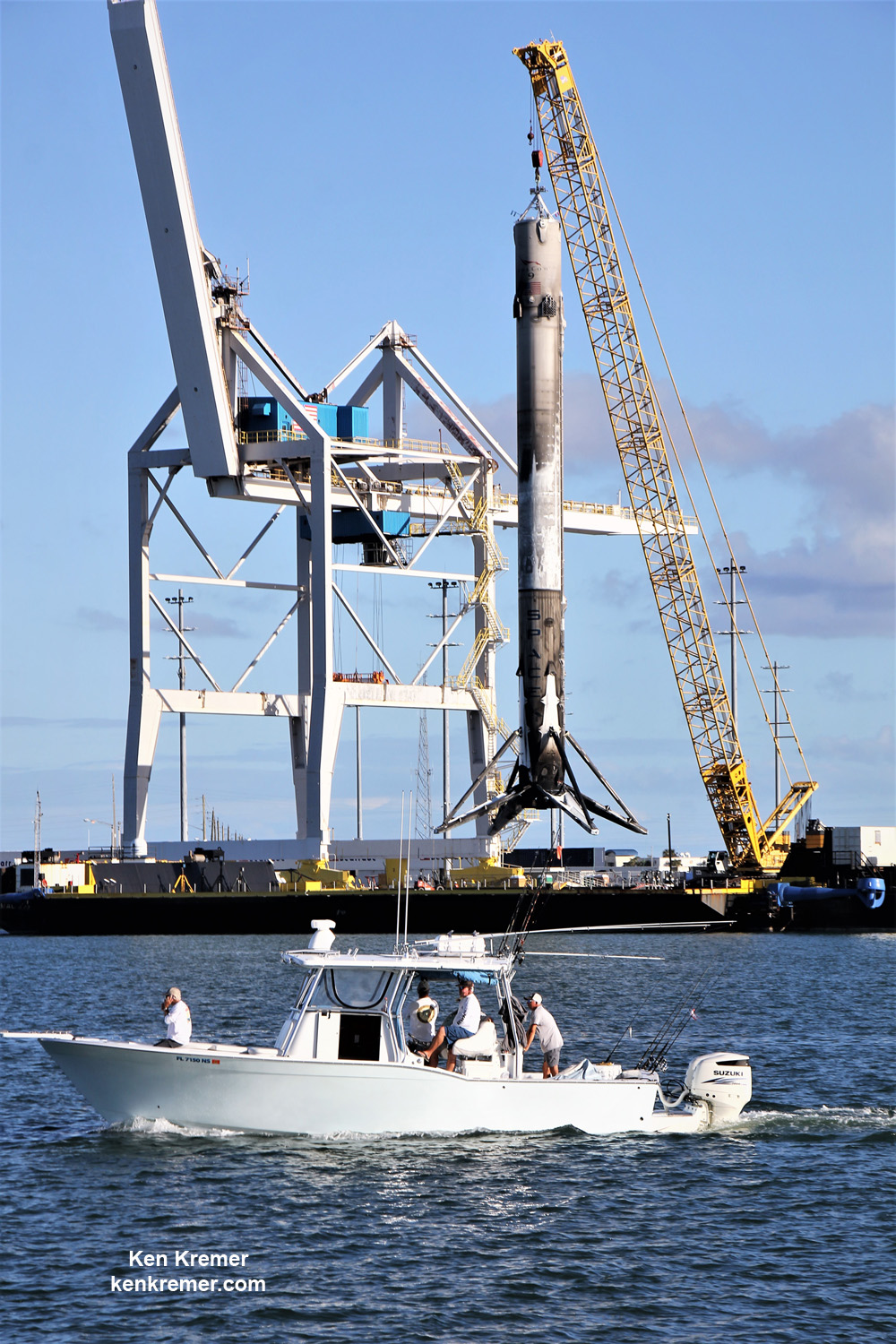
It has been barely two weeks after the last dogeship landed booster arrived back into port in mid-October for the SES-11 launch on October 11 and sunrise port arrival on October 15.
OCISLY which stands for “Of Course I Still Love You” left Port Canaveral several days ahead of the planned Oct. 30 launch and was prepositioned in the Atlantic Ocean several hundred miles (km) off the US East coast, awaiting the boosters approach and pinpoint propulsive soft landing.
The booster was outfitted with four grid fins and four landing legs to accomplish the pinpoint touchdown on the barge at sea.
Watch this video of the SpaceX booster return to Port Canaveral, FL, from the KoreaSat-5 mission:
Video caption: The booster from the KoreaSat-5 mission returns to Port Canaveral, FL, on the SpaceX drone ship ‘Of Course I Still Love You” on Nov. 2, 2017 after a successful landing at sea. Credit: Jeff Seibert
Video caption: After launching from the Kennedy Space LC-39A the SpaceX Falcon 9 first stage landed on the OCISLY droneship offshore. It was towed back to Port Canaveral to be refurbished and used again in a later launch. Credit: Julian Leek
To date SpaceX has accomplished 19 successful landings of a recovered Falcon 9 first stage booster by land and by sea.
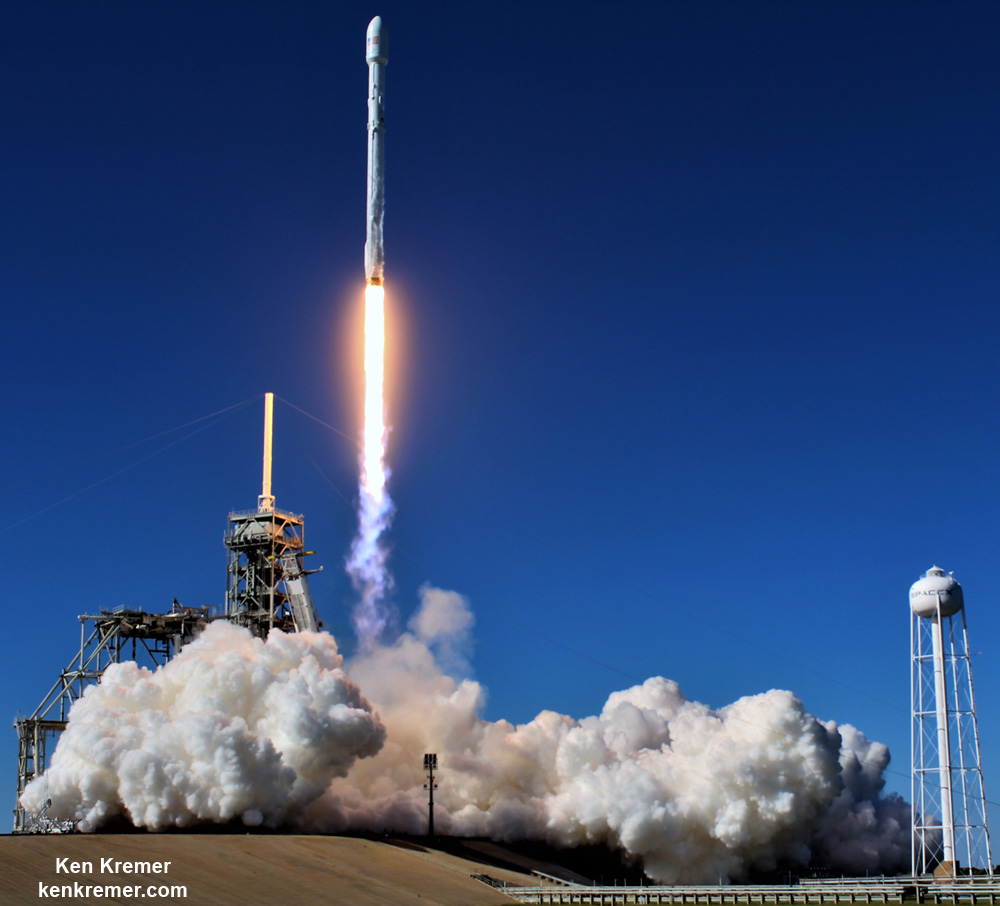
Watch for Ken’s continuing onsite coverage of SpaceX KoreaSat-5A & SES-11, ULA NROL-52 and NASA and space mission reports direct from the Kennedy Space Center and Cape Canaveral Air Force Station, Florida.
Stay tuned here for Ken’s continuing Earth and Planetary science and human spaceflight news.
